April 30, 2025
Prelims Pointers
April 30, 2025
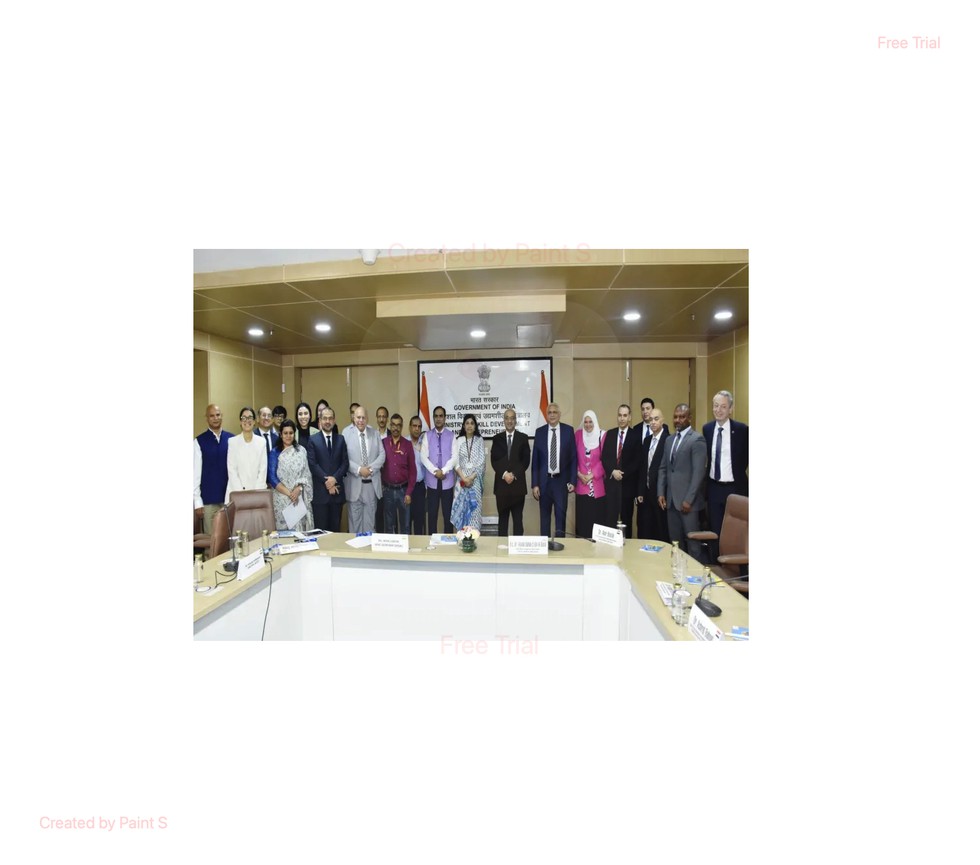
Key Facts about Egypt
- Egypt’s Location: Located in northeast Africa, extending into southwest Asia through the Sinai Peninsula. It is a transcontinental country.
- Bordering Nations: Shares borders with: Libya (west), Sudan (south), Israel and Gaza Strip (northeast)
- Coastlines along the Mediterranean Sea (north) and Red Sea (east).
Key Geographical Features
- The Nile River, the longest river in the world, flows from south to north through Egypt.
- Aswan High Dam: Inaugurated in 1971, it is one of the world’s largest embankment dams. It is known for f
- Controls annual Nile flooding.
- Provides water storage for irrigation.
- Generates hydroelectric power.
- Created Lake Nasser, one of the largest artificial lakes, extending into Sudan.
Prelims Pointers
April 30, 2025

Key Scientific Findings:
- A novel heterostructure, combining Copper Tungsten Oxide (CuWO₄) and Copper Oxide (CuO), has been created to exploit the Built-In Electric Field (BIEF) effect for enhanced hydrogen evolution.
- The structure is formed by growing CuWO₄ nanoparticles over a Cu(OH)₂ precursor, leading to a p-n heterojunction that creates an asymmetric electronic environment.
- This BIEF plays a crucial role in modulating proton adsorption and desorption, directly influencing the Hydrogen Evolution Reaction (HER)
Mechanism of Proton Adsorption
- The interface between CuO and CuWO₄ shows variation in Gibbs Free Energy (∆G), especially near the depletion region.
- A gradient in ∆G across this interface enhances hydrogen adsorption at CuO and desorption at CuWO₄, making the system more favourable for HER.
- This showcases "negative cooperativity", where increased proton binding at one site reduces affinity at other sites, facilitating proton desorption, a key step in alkaline hydrogen production.
What is Green Hydrogen?
- Green Hydrogen is produced through the electrolysis of water using renewable energy sources like solar, wind, or hydropower, releasing no greenhouse gases.
- It is a clean, sustainable, and flexible energy carrier, with water vapour as its only by-product.
- Unlike grey hydrogen (from fossil fuels), green hydrogen contributes to zero carbon emissions.
Green Hydrogen Production Methods
- Alkaline Electrolysis: Mature, low-cost method using KOH/NaOH; needs nickel/platinum
- Proton Exchange Membrane (PEM) Electrolysis: High efficiency, fast, but expensive due to precious metal catalysts.
- Solid Oxide Electrolysis (SOEC): Works at 700–1000°C, enables co-electrolysis of H₂O and CO₂, but involves complex materials and high costs.
Prelims Pointers
April 30, 2025
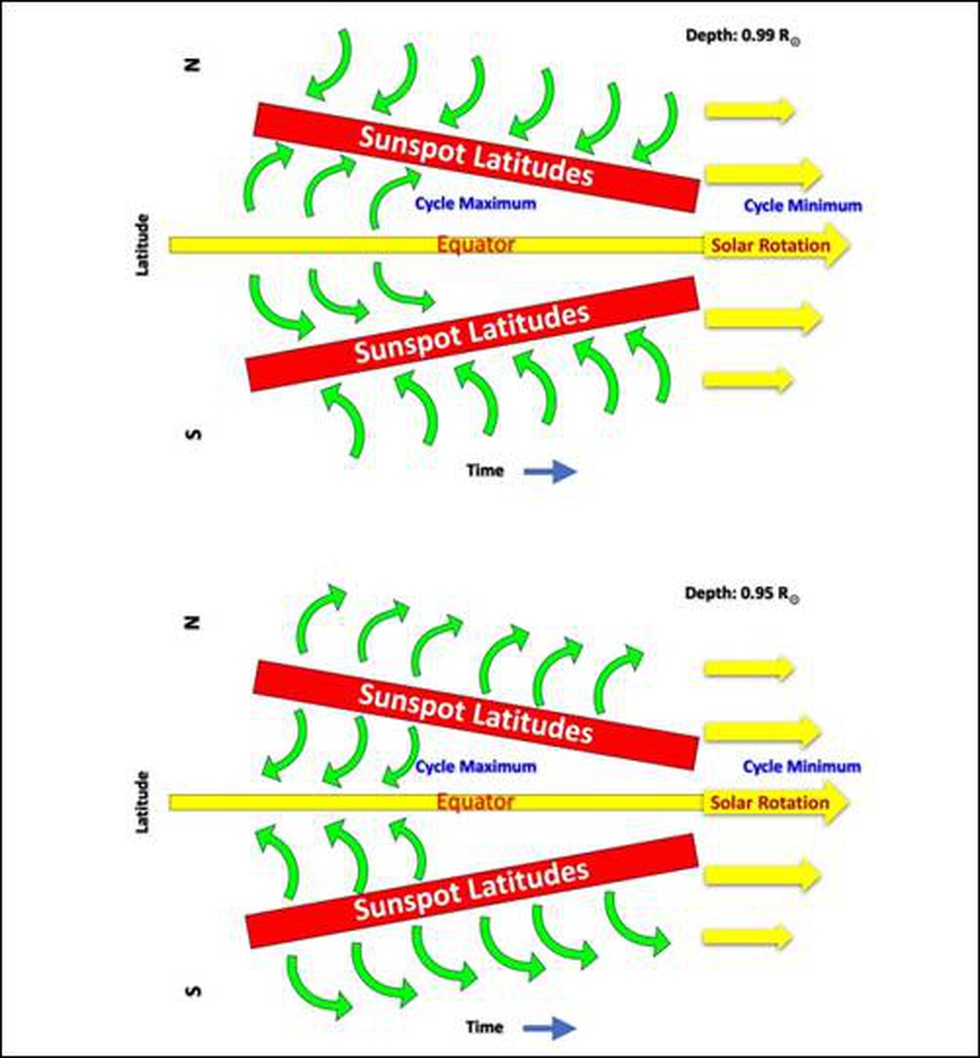
About Near-Surface Shear Layer (NSSL) & Key Findings
- The Near-Surface Shear Layer (NSSL) is a crucial region located just beneath the Sun’s visible surface, extending to a depth of about 35,000 km.
- In the NSSL, the Sun's angular velocity (rotation speed) decreases rapidly with radius, creating a rotational shear that varies with depth, latitude, and solar magnetic activity.
- The study revealed surface plasma flows converge towards sunspot latitudes but reverse midway in the NSSL and flow outward, forming large circulation cells.
- These flows are shaped by the Sun's rotation and the Coriolis force, which also influences Earth's hurricanes. This connection helps explain how the Sun's spin behaviour varies with depth.
- Despite being dynamic, these localised flows do not drive the Sun's large-scale zonal flows, known as torsional oscillations, implying the presence of deeper unknown forces in the Sun’s interior.
Techniques Used
- Scientists employed helioseismology, a method that uses sound waves travelling inside the Sun to map internal structures and dynamics.
- They used over a decade’s worth of data from:
- NASA’s Solar Dynamics Observatory (SDO), specifically the Helioseismic and Magnetic Imager (HMI), and
- The Global Oscillations Network Group (GONG) of the National Solar Observatory (NSO), USA.
- The research confirmed the findings using 3D velocity maps of sunspot regions, showing matching surface inflows and deeper outflows.
Prelims Pointers
April 30, 2025

About WAM!
- WAM! (WAVES Anime & Manga Contest) is India’s first national initiative focused on discovering, nurturing, and promoting original Indian Intellectual Properties (IPs) in anime, manga, webtoons, and cosplay.
- It is being organised by the Ministry of Information and Broadcasting in collaboration with the Media & Entertainment Association of India (MEAI).
- The initiative will culminate in the WAVES 2025 national finale, which will be held from May 1–4, 2025 at the Jio World Convention Centre, Mumbai.
About WAVES 2025
- WAVES (World Audio-Visual & Entertainment Summit) 2025 is a pioneering event designed to promote India's strength in the AVGC-XR sector — Animation, Visual Effects, Gaming, Comics, and Extended Reality.
- WAVES is being hosted under the central theme: “Create in India, Create for the World”, emphasizing India’s ambition to become a global creative hub.
- The summit brings together global leaders, innovators, studios, and creators, providing a collaborative platform for India's media and entertainment economy.
- WAVES features the Create in India Challenges (CIC) — an initiative that received over 1 lakh registrations, including 1,100 international participants, reflecting global interest in India’s creative ecosystem.
- The summit includes discussions and showcases on Broadcasting, Films, Print Media, Radio, Digital Media, Advertising, Social Media Platforms, and Generative AI.
- It also highlights technological advancements in Augmented Reality (AR), Virtual Reality (VR), and Extended Reality (XR).
Prelims Pointers
April 30, 2025

What is a Brain-Computer Interface (BCI)?
- A Brain-Computer Interface (BCI) is a system that enables direct communication between the brain and an external device, such as a computer or robotic limb.
- It decodes brain signals and translates them into commands to control machines, bypass damaged neural pathways, and restore lost functions in persons with neurological disorders.
- Earlier BCI systems could only translate brain signals into text, and that too with limited vocabulary, slow processing speed, and reduced accuracy.
How Does It Work?
- Sensor implantation: Electrodes were surgically placed on the motor cortex (brain region controlling movement).
- Signal interpretation: The system decodes neural signals of imagined movement, using machine learning to predict changes over time in signal patterns.
- Virtual training: The user was first trained using a virtual robotic arm, allowing refinement of mental control.
- Real-world application: The participant performed complex tasks like picking up blocks, opening a cabinet, and holding a cup under a water dispenser, indicating precise, consistent control.
Broader Applications of BCI Technology
- The BCI also has potential for restoring speech in individuals with conditions like brainstem stroke or Amyotrophic Lateral Sclerosis (ALS).
- Fine electrodes and artificial neural networks can decode intended speech and generate text output, Audible speech, and a speaking avatar.
One study showed a patient with ALS communicating at 62 words per minute, 3.4 times faster than previous BCI systems.
Prelims Pointers
April 30, 2025

About AIM4NatuRe Initiative:
- It is an Food and Agriculture Organization (FAO)-led global initiative aimed at enhancing the capacity of countries to monitor and report on ecosystem restoration.
- It is a US$ 9 million programme funded by the United Kingdom, with a contribution of GBP 7 million, and is set to run from 2025 to 2028.
- AIM4NatuRe will leverage cutting-edge technology, standardized data frameworks, and capacity development to support global efforts to restore at least 30 percent of degraded ecosystems by 2030, as outlined in Target 2 of the Global Biodiversity Framework (GBF).
- By fostering transparency, accountability, and data interoperability, the initiative will enable countries to track restoration efforts across forests, wetlands, grasslands, marine ecosystems, and agricultural landscapes.
- AIM4NatuRe is part of FAO’s AIM4Forests Programme, expanding the scope beyond forests to provide a holistic approach to nature restoration monitoring.
- The initiative prioritizes a comprehensive approach to ecosystem restoration, encompassing a wide range of activities from restoration of degraded agricultural lands, and wetland rehabilitation to the recovery of grasslands and marine ecosystems.
- AIM4NatuRe will also develop practical guidance documents and technical solutions, namely the Framework for Ecosystem Restoration Monitoring (FERM), to support countries in data collection, analysis, and reporting, ensuring that information is readily available and usable.
- Notably, the initiative will support Indigenous Peoples in the monitoring of biocentric nature restoration, a holistic approach that prioritizes the well-being of all living things within an ecosystem.
Prelims Pointers
April 30, 2025

About Rabies:
- It is a deadly zoonotic disease caused by the Rabies virus (RABV) that attacks the nervous system.
- RABV is an RNA virus of the rhabdovirus family that can affect the body in one of two ways.
- It can enter the peripheral nervous system directly and migrate to the brain.
- It can also replicate within muscle tissue, where it is safe from the host’s immune system. From here, it enters the nervous system through the neuromuscular junctions.
- Once inside the nervous system, the virus produces acute inflammation of the brain.
- Transmission:
- The virus spreads through the saliva of infected animals.
- Infected animals can spread the virus by biting another animal or a person.
- In rare cases, rabies can be spread when infected saliva gets into an open wound or the mucous membranes, such as the mouth or eyes.
- In up to 99% of the human rabies cases, dogs are responsible for virus transmission.
- Symptoms:
- The incubation period for rabies is typically 2–3 months but may vary from one week to one year, depending on factors such as the location of virus entry and the viral load.
- Initial symptoms of rabies include generic signs like fever, pain, and unusual or unexplained tingling, pricking, or burning sensations at the wound site.
- As the virus moves to the central nervous system, progressive and fatal inflammation of the brain and spinal cord
- Once the virus infects the central nervous system and clinical symptoms appear, rabies is fatal in 100% of cases.
- Clinically, it has two forms:
- Furious rabies – characterized by hyperactivity and hallucinations.
- Paralytic rabies – characterized by paralysis and coma.
- It is one of the Neglected Tropical Diseases (NTD) that predominantly affects already marginalized, poor, and vulnerable populations.
- Rabies is most common in rural parts of Asia and Africa, though it’s found on all continents except Antarctica.
- Prevention:
- It is a vaccine-preventable disease.
- Vaccinating dogs, including puppies, is the most cost-effective strategy for preventing rabies in people because it stops the transmission at its source.
- Treatment:
- Medical care following a rabies exposure is called post-exposure prophylaxis, or PEP.
- PEP includes wound care, a dose of Human Rabies Immune Globulin (HRIG), and a series of four or five rabies vaccines, which must be administered as soon as possible after exposure.
- This care is vital to prevent the disease from developing. It is nearly 100% effective if administered promptly.
Prelims Pointers
April 30, 2025
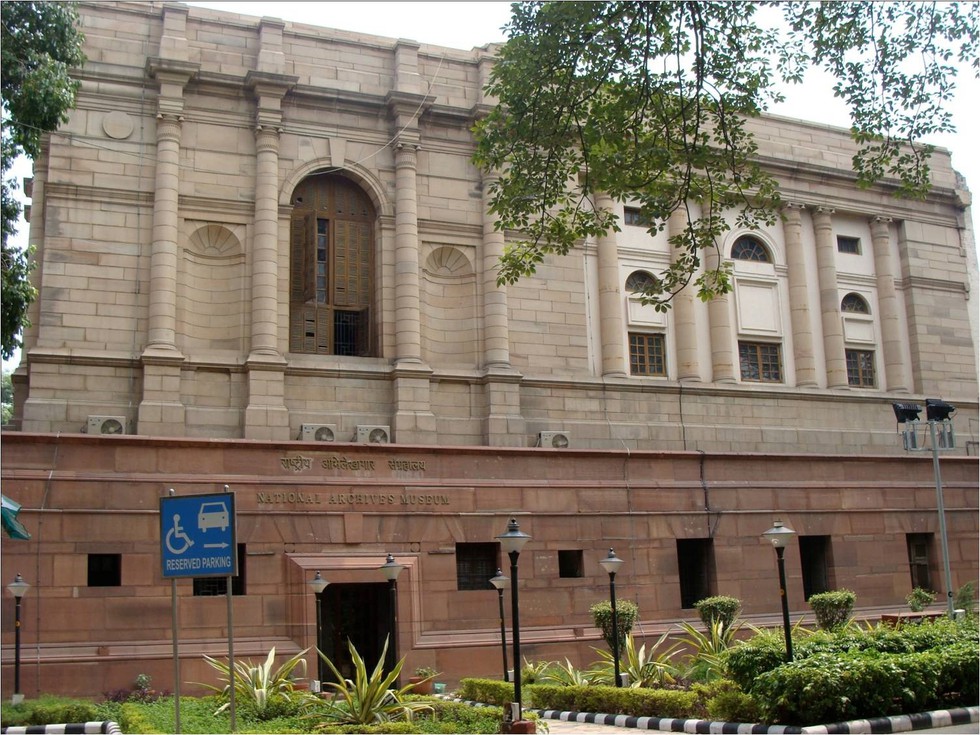
About National Archives of India (NAI):
- The NAI, which functions under the Ministry of Culture, is the repository of all non-current government records, holding them for the use of administrators and scholars.
- It is the custodian of the records of enduring value of the Government of India.
- It is the biggest archival repository in South Asia.
- History:
- It was originally established as the Imperial Record Department on 11 March 1891 in Kolkata (Calcutta).
- It was transferred to New Delhi in 1911.
- The complete transfer of records from Calcutta to New Delhi was finalized in 1937.
- The NAI also serves as the nodal agency for implementing the Public Records Act, 1993, and the Public Record Rules, 1997.
- Currently, the National Archives of India holds over 34 crore pages of Public Records, including files, volumes, maps, treaties, rare manuscripts, cartographic records, parliamentary debates, censuses, travel accounts, proscribed literature, and government gazettes.
- A significant portion of its oriental records is in Sanskrit, Persian, Odia, and other languages.
- Access to the records in the NAI is governed by the provisions of the Public Records Rules, 1997.
- The NAI keeps and conserves records of the government of India and its organisations. It does not receive classified documents.
- It has one regional office at Bhopal and three Records Centers at Bhubaneswar, Jaipur, and Puducherry.
- Abhilekh PATAL:
- The Abhilekh PATAL (Portal for Access to Archives and Learning) is an initiative of NAI to make its rich treasure of Indian archival records available to all online.
- It is a full-featured web portal to access the NIA’s reference media and its digitized collections through the internet.
- It contains more than 2.7 million files held by the National Archives of India. The Digitized Collections contains over 71,792 digitized records for online access.
Prelims Pointers
April 30, 2025

About Special 301 Report:
- It is an annual report by the United States Trade Representative (USTR) under the Trade Act of 1974.
- It identifies countries that are considered by the US as not providing adequate and effective protection of Intellectual Property Rights (IPRs) or fair and equitable market access to IP rights holders from the US.
- The report has been issued every year since 1989.
- It designates countries as “priority foreign country”, “priority watch country”, and “watch list country”.
- Designation as a priority foreign country initiates an investigation and possible application of sanctions on the foreign country, while designation on a Priority Watchlist suggests serious IPR deficiencies that require greater US attention.
- Other countries that are considered to have serious IPR deficiencies but are not designated for greater US attention are placed on a Watchlist.
- The report includes both developed and developing countries.
Prelims Pointers
April 30, 2025

About Phthalates:
- Phthalates are a family of chemical compounds primarily used in plastic products (most commonly in the specific type of plastic named polyvinyl chloride, also known as
- They are the most commonly used plasticisers in the world and are categorised as high and low phthalates depending on the molecular weight.
- Applications:
- They may be blended as an additive into special plastics in order to increase the performance of the material.
- They are used to soften plastics, making them more flexible or more durable.
- They are sometimes used to decrease the melting temperature of plastics to aid the moulding process.
- They are used in hundreds of products, including vinyl flooring, adhesives, detergents, lubricating oils, automotive plastics, plastic clothes (raincoats), and personal-care products (soaps, shampoos, hairsprays, and nail polishes).
- They are used widely in polyvinyl chloride plastics, which are used to make products such as plastic packaging film and sheets, garden hoses, inflatable toys, blood storage containers, medical tubing, and some children’s toys.
- They also have a wide application in screen print, heat transfer inks, and plastisol inks.
- Since phthalates are not chemically bound to the polymer molecule, they can be released from products or dissolve when in contact with liquids or fats.
- As a result, they may migrate out of a material, resulting in exposure to humans and the environment.
- Health Impacts:
- Some phthalates are endocrine disruptors, a class of potent chemicals that interfere with our hormone systems.
- Some of the health harms associated with phthalates are changes to fertility, early puberty and risk of low birth weight, obesity, diabetes, impacts to the immune system, cardiovascular and respiratory problems, some cancers, and neurological and behavioral problems.
April 29, 2025
Prelims Pointers
April 29, 2025

Padma Awards Historical Background
- The Padma Awards were established in 1954 alongside the Bharat Ratna.
- Initially, Padma Awards had three classes: Pahela Varg, Dusra Varg, and Tisra Varg.
- These were renamed in 1955 via Presidential Notification as: Padma Vibhushan, Padma Bhushan and Padma Shri
Padma Awards Categories
- Padma Vibhushan: Awarded for exceptional and distinguished service.
- Padma Bhushan: Conferred for distinguished service of a high order.
- Padma Shri: Recognises distinguished service in any field.
Eligibility Criteria
- All persons, regardless of race, occupation, position or gender, are eligible for the award.
- Government servants, including employees of Public Sector Undertakings (PSUs), are not eligible, except doctors and scientists.
- Awards are normally not conferred posthumously, but in highly deserving cases, exceptions are allowed.
- A minimum 5-year gap is required for conferring a higher category Padma award upon a previously awarded individual. However, this can be relaxed by the Awards Committee in exceptional cases.
- Nominations are open to the public, and self-nomination is also allowed.
Selection Process
- All nominations are evaluated by the Padma Awards Committee, which is constituted annually by the Prime Minister.
- The Committee is headed by the Cabinet Secretary.
- Its recommendations are submitted to the Prime Minister and President for final approval.
- The awards are presented by the President, usually in March or April.
- Awardees receive a Sanad (certificate) signed by the President and a medallion.
Other Key Features
- The total number of Padma awards per year is capped at 120, excluding:
- Posthumous awards
- Awards to NRIs, foreign nationals, and Overseas Citizens of India (OCIs)
- The award does not constitute a title and cannot be used as a prefix or suffix to the awardee’s name.
- Disciplines covered: Awards span across art, social work, public affairs, science and engineering, trade and industry, medicine, literature and education, sports, civil service, among others.
Prelims Pointers
April 29, 2025
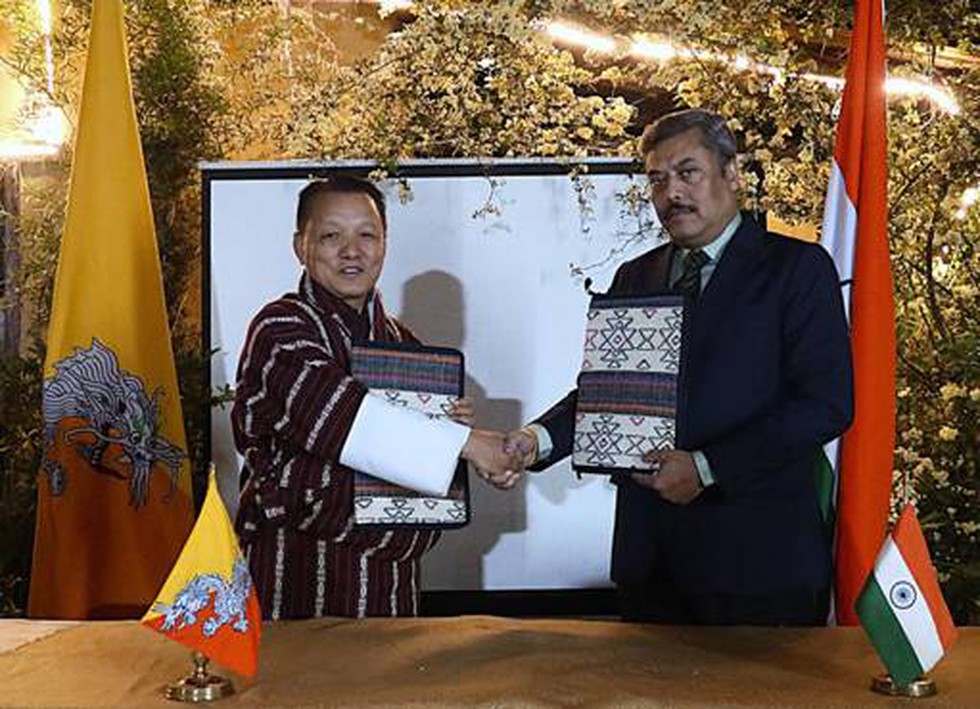
Key Facts about Bhutan
- Bhutan is a landlocked Himalayan country, bordered by India to the south, east, and west, and China (Tibet Autonomous Region) to the north.
- Indian states bordering Bhutan: Sikkim, West Bengal, Assam, and Arunachal Pradesh.
- Thimphu is the capital and largest city of Bhutan.
- Phuntsholing is Bhutan’s key financial and trade hub, located along the India-Bhutan border.
- Political System: Bhutan is a parliamentary monarchy.
- It transitioned to democracy in 2008 with the first democratic elections.
- The King of Bhutan remains the Head of State.
- Official name: Kingdom of Bhutan.
- Local name: Druk Gyal Khap, meaning "Land of the Thunder Dragon".
- Longest River: The Manas River (376 km), a transboundary river flowing through southern Bhutan into India, forms an important ecological and trade corridor.
Significance of India–Bhutan Customs Cooperation
- India is Bhutan’s largest trading partner, accounting for about 80% of Bhutan’s total trade, making border customs cooperation vital for both countries.
- Bhutan, being a landlocked country, relies heavily on Land Customs Stations (LCSs) for trade. There are 10 India-Bhutan LCSs—6 in West Bengal and 4 in Assam.
- The JGC is an annual bilateral mechanism aimed at strengthening Customs cooperation, facilitating cross-border trade, and reforming customs procedures in line with global best practices.
Prelims Pointers
April 29, 2025

About National Supercomputing Mission (NSM)
- The National Supercomputing Mission (NSM) is a flagship initiative launched in 2015 by the Government of India to strengthen the nation’s High-Performance Computing (HPC)
- It aims to enhance India’s computational capacity in sectors like science, technology, academia, research, and industry, making the country self-reliant in supercomputing technologies.
- The mission is jointly steered by the Department of Science and Technology (DST) and the Ministry of Electronics and IT (MeitY), and is implemented by C-DAC, Pune and IISc, Bengaluru.
- The key goal is to position India globally among top nations in supercomputing by enabling research, reducing technological import dependence, and creating a robust indigenous HPC ecosystem.
Key Achievements
- 34 supercomputers have been deployed with a total computational capacity of 35 Petaflops across top institutes like IITs, IISc, and C-DAC, including institutions in Tier II and Tier III cities.
- Supercomputers have recorded 85–95% utilisation, supporting over 10,000 researchers and 1,700+ PhD scholars from 200+ institutions.
- More than 1 crore computing jobs have been completed and over 1,500 research papers published, reflecting substantial research productivity.
- NSM has trained over 22,000 individuals in HPC and AI skills through five dedicated centres in Pune, Kharagpur, Chennai, Palakkad, and Goa.
Indigenisation Milestones
- "Rudra" HPC servers, developed indigenously, are the first HPC-class servers built in India, matching global standards.
- Supercomputers like PARAM Rudra (Pune, Delhi, Kolkata) have been dedicated for advanced research in physics, cosmology, and earth sciences.
- The Trinetra high-speed network (developed under NSM) boosts data transfer rates up to 200 Gbps and is being rolled out in phases – PoC, Trinetra-A (100 Gbps), and Trinetra-B (200 Gbps).
AI Supercomputing: AIRAWAT
- The AIRAWAT project is India’s AI-focused supercomputing initiative under NSM, offering a common AI computing platform for start-ups, researchers, and innovation hubs.
- The Proof of Concept (PoC) system of AIRAWAT features 200 petaflops of AI processing power, scalable to 790 AI petaflops.
- AIRAWAT secured 75th rank in the Top 500 Global Supercomputing List (ISC 2023, Germany), placing India among the top AI supercomputing nations.
Institutional Milestones
- PARAM Shivay (2019) at IIT-BHU was the first indigenous supercomputer under NSM.
- PARAM Pravega (2022) at IISc Bengaluru is among the largest academic supercomputers in India, with 3 petaflops processing power.
Prelims Pointers
April 29, 2025
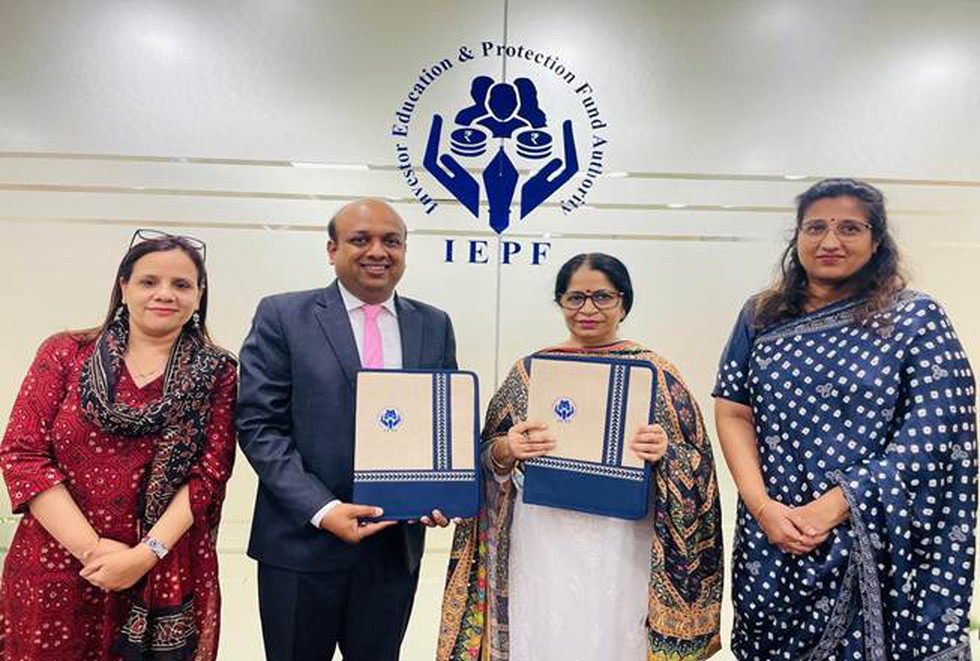
About Investor Education and Protection Fund Authority (IEPFA)
- The Investor Education and Protection Fund Authority (IEPFA) was established in 2016 under the Companies Act, 2013.
- It manages the Investor Education and Protection Fund (IEPF) and promotes investor awareness and financial protection.
- Nodal Ministry: Ministry of Corporate Affairs
- The IEPF consists of amounts that remained unclaimed for 7 years, including:
- Unpaid dividends,
- Application money is due for refund,
- Matured deposits and debentures,
- Interest on investments from the fund,
- Grants or donations received from the government or other entities.
IEPFA’s ‘Niveshak Shivir’ Initiative
- ‘Niveshak Shivir’ is a joint initiative of IEPFA and SEBI launched to simplify the process of reclaiming unclaimed dividends and shares.
- The camps will feature one-stop kiosks set up by companies and RTAs in cities with large numbers of unclaimed dividend holders, starting with Mumbai and Ahmedabad in May 2025.
- Investors can update KYC and nominations, verify claim status, and get real-time grievance redressal at these camps.
- The initiative aims to reduce investor dependence on intermediaries, thereby minimising fraud and misinformation risks.
A QR-code-based Google Form will be used for pre-registration, supported by the regional offices of ICAI and SEBI.
Prelims Pointers
April 29, 2025

Significance of Action
- The move is aimed at protecting consumer rights and preventing undue pressure on consumers to pay additional charges during service availing.
- As per law, no hotel or restaurant can force consumers to pay a service charge, nor can a service charge be collected under any alternative name.
About Central Consumer Protection Authority (CCPA)
- The CCPA was established under Section 10 of the Consumer Protection Act, 2019.
- The Consumer Protection Act, 2019, which replaced the 1986 Act, was notified on August 9, 2019, and came into force on July 20, 2020.
- Nodal Ministry: Ministry of Consumer Affairs, Food & Public Distribution.
Functions and Powers of CCPA
- The CCPA protects, promotes, and enforces the rights of consumers as a class under the Act.
- It prevents unfair trade practices and curbs false or misleading advertisements.
- The CCPA ensures that no one publishes or disseminates false or misleading advertisements.
- The CCPA can initiate class-action suits, including recalls, refunds, and cancellation of licenses, when necessary.
- The CCPA can conduct inquiries and investigations through its Investigation Wing, headed by a Director-General.
- It can order the discontinuation of unfair practices, impose penalties on errant businesses, and enforce consumer welfare measures.
- Composition of CCPA: A Chief Commissioner heads the CCPA and has two other commissioners:
- One commissioner deals with goods-related issues.
- The other commissioner handles service-related complaints.
Prelims Pointers
April 29, 2025

About GAVI, the Vaccine Alliance:
- It is an independent public-private partnership that was created in 2000 to improve access to new and underused vaccines for children living in the world’s poorest countries.
- Based in Geneva, Switzerland, Gavi brings together public and private sectors with the shared goal of creating equal access to vaccines for children, wherever they live.
- It brings together developing country and donor governments, the World Health Organization, UNICEF, the World Bank, the vaccine industry, research and technical agencies, civil society organizations, and private philanthropists.
- Gavi’s main activities include supporting low- and middle-income countries’ access to new and underused vaccines for vulnerable children through financial support, technical expertise, and market-shaping efforts, such as negotiating with manufacturers, to help lower the cost of procuring vaccines.
- By bringing the key stakeholders in global immunisation together around one mission, Gavi combines the technical expertise of the development community with the business know-how of the private sector.
- Since its beginnings, Gavi has vaccinated more than 1.1 billion children and saved an estimated 18.8 million lives (2023 figures).
- Gavi was one of the organizations leading COVAX, a multilateral effort that supported the equitable development, procurement, and delivery of COVID-19 vaccines globally that began in 2020 and ended in 2023.
Prelims Pointers
April 29, 2025

About Kuldiha Wildlife Sanctuary:
- It is located in the Balasore District of Odisha within the Eastern Ghats.
- It is spread across 272 sq.km. in the Chota Nagpur Plateau region.
- It is part of the larger Similipal-Kuldiha-Hadgarh Elephant Reserve, making it a crucial habitat for the conservation of elephants in the region.
- It is connected with Simlipal Tiger Reserve via Nato and Sukhupada Hill ranges.
- It features a network of streams, including the Kuldiha stream and its tributaries.
- Vegetation: Kuldiha sanctuary area, adjoining Nilgiri forest in the North and Mayurbhanj Forest in the West, is a typical representative of a mixture of peninsular (coastal) Sal forest and moist mixed deciduous forest.
- Flora: The sanctuary boasts a rich diversity of flora, including dense forests of sal (Shorea robusta), jamun (Syzygium cumini), piyasal (Pterocarpus marsupium), bahera (Terminalia bellirica), mango (Mangifera indica), and simul (Bombax ceiba).
- Fauna:
- It is home to a number of endangered and threatened wild animal species like Asiatic Elephant, Leopard, Gaur, Mouse deer, Pangolin, Ratel, Giant squirrel, etc.
- Besides that, some endangered bird species like Hill myna, Woodpecker, Hornbill and Eagles are also found in the Sanctuary.
Prelims Pointers
April 29, 2025
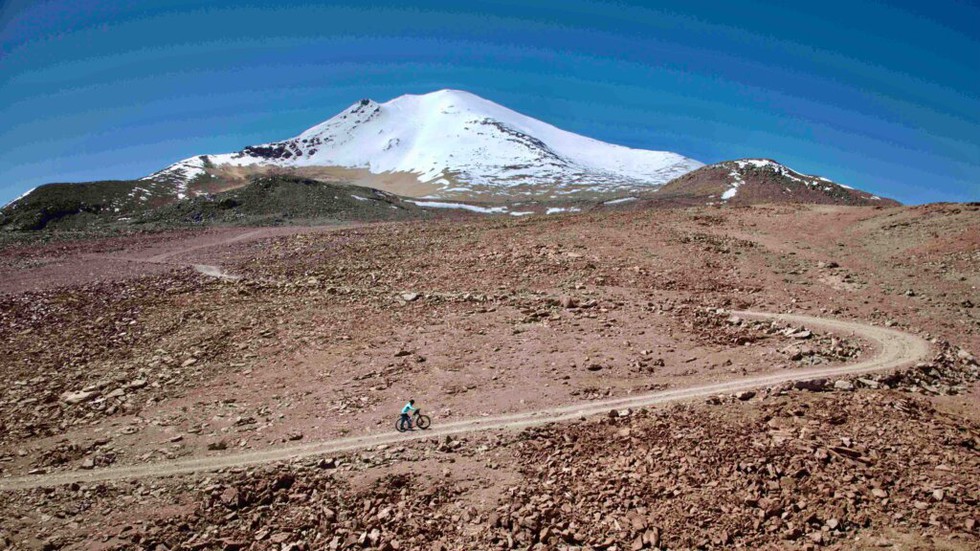
About Uturuncu Volcano:
- It is located in southwestern Bolivia, within the Andes Mountains.
- It is a stratovolcano dominated by dacitic lava domes and flows.
- Elevation: About 6,008 meters (19,711 feet) above sea level — it is the tallest mountain in the southern part of Bolivia.
- Uturuncu last erupted 250,000 years ago, yet is seismically active and lies at the centre of a 70 km diameter uplifted region.
- Uturuncu sits above an enormous and extremely deep underground reservoir of magma named the Altiplano-Puna Magma Body (APMB), which stretches beneath southern Bolivia, northern Chile, and northern Argentina.
- Uturuncu is known as a "zombie" volcano because of its ongoing but non-eruptive activity.
- The "zombie"-like unrest of Uturuncu is due to the movement of liquid and gas beneath the crater, with a low likelihood of an imminent eruption.
Prelims Pointers
April 29, 2025

About Mackinac Island:
- It is an island and city located in northern Michigan, United States.
- It sits in the extreme northeast part of Lake Huron, just as it prepares to join the waters of Lake Michigan - two of North America's Great Lakes.
- It has an area of approximately 4.35 square miles.
- The island is bordered by limestone cliffs and rises in the east to 339 feet (103 metres) above the surrounding waters.
- History:
- The French arrived in the territory encompassing the island, which had long been the home of the Anishinaabek People, back in the 1600s.
- By the 1700s, the British had taken over, and Americans claimed it shortly thereafter.
- The Mackinac Island State Park covers the vast majority of the island and provides hiking trails, wooded canopies, and the famous Arch Rock limestone formation.
- It retains an 18th- and 19th-century atmosphere; automobiles are banned, and horses and buggies and bicycles are used for transport.
- The restored Fort Mackinac, Beaumont Memorial (dedicated to U.S. Army surgeon William Beaumont, who, while serving at the fort, made discoveries regarding human digestion), and the Stuart House (1817; the residence of the island’s American Fur Company agent) are preserved as historical museums.
Prelims Pointers
April 29, 2025

About Trends in World Military Expenditure Report:
- It is an annual report published by the leading Swedish think tank, the Stockholm International Peace Research Institute (SIPRI).
- It provides a comprehensive analysis of military spending across the globe.
- Highlights of 2024 Report:
- The global defence expenditures reached $2.46 trillion in 2024, an increase from $2.24 trillion in the previous year, bringing the average defence spending to 9% of global GDP, up from 1.6% in 2022 and 1.8% in 2023.
- Military spending increased in all world regions, with particularly rapid growth in both Europe and the Middle East, courtesy of the ongoing Ukraine-Russia war and Israel-Hamas conflict.
- Military spending in Europe (including Russia) rose by 17 percent to $693 billion and was the main contributor to the global increase in 2024.
- Military spending by the USA rose by 5.7 percent to reach $997 billion, which was 66 percent of total NATO spending and 37 percent of world military spending in 2024.
- Military expenditure in the Middle East reached an estimated $243 billion in 2024, an increase of 15 percent from 2023, with Israel and Lebanon emerging as the biggest spenders in the region.
- 60 percent of the world’s military spending came from only five countries – the USA (37 percent), China (12 percent), Russia (5.5 percent), Germany (3.3 percent) and India (3.2percent).
- India, the fifth biggest military spender in the world in 2024, increased its spending to $86.1 billion, up by 1.6 percent from 2023 and by 42 percent from
- India's military spending in 2024 was nearly nine times that of Pakistan's
- China's military spending rose by 7.0 percent to an estimated USD 314 billion, marking three decades of uninterrupted growth. China alone accounted for half of the defence spending across Asia and Oceania.
April 28, 2025
Prelims Pointers
April 28, 2025
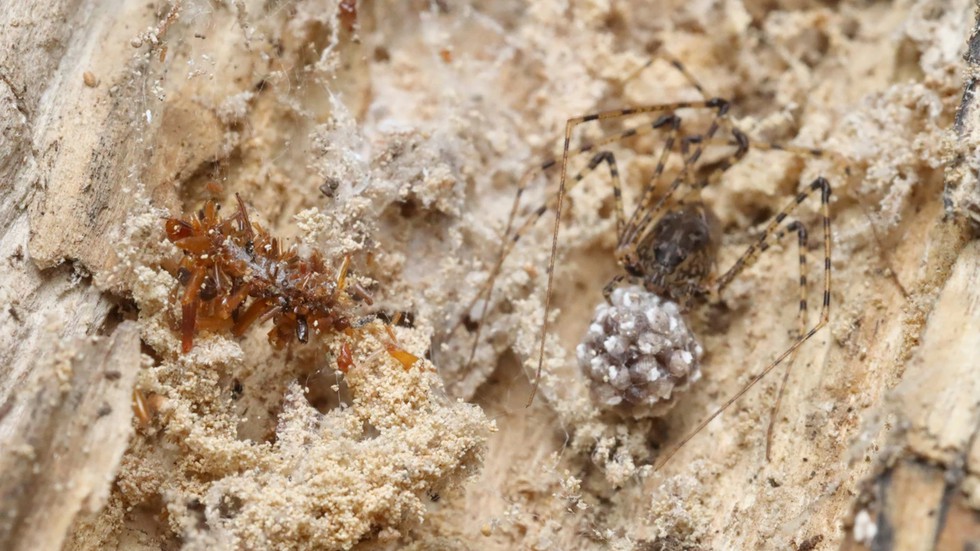
About Bone Collector’ Caterpillar
- The "Bone Collector" is a newly discovered carnivorous caterpillar found exclusively on the Hawaiian island of Oahu.
- It constructs a protective case using body parts of its prey, such as ant heads and fly wings, along with silk.
- Habitat: The bone collector is found in a small, isolated patch of mountain forest on Oahu, which is also threatened by invasive species.
- The caterpillar's evolutionary lineage is estimated to be at least six million years old, older than the formation of the Hawaiian islands themselves.
- This caterpillar feeds on insects caught in spider webs and adorns its silk case using the body parts of its prey, such as ant heads and fly wings.
About Hawaii
- Hawaii is a S. state located in the Pacific Ocean and is made up of an archipelago formed by volcanic activity.
- It comprises eight main islands: Hawaii (Big Island), Maui, Oahu, Kauai, Molokai, Lanai, Niihau, and Kahoolawe.
- The capital city is Honolulu, situated on Oahu.
- The islands feature diverse landscapes, including active volcanoes, rainforests, beaches, and dramatic cliffs.
- The Hawaiian Islands originated from a hotspot in the Earth's mantle, which continues to create volcanic formations across the Pacific.
Prelims Pointers
April 28, 2025
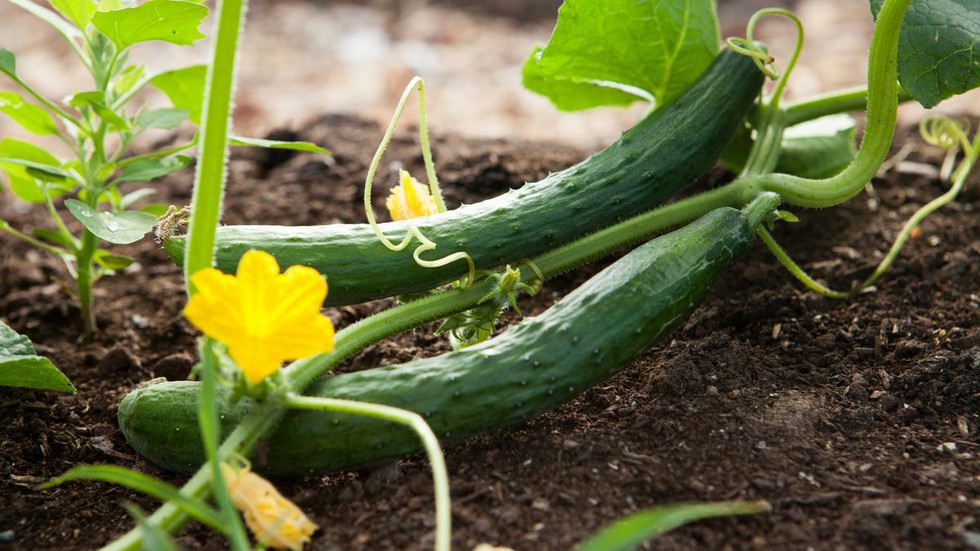
Introduction
- Every year, farmers across India and the world face a relentless and invisible enemy: plant viruses. In India, the Cucumber Mosaic Virus (CMV) alone causes 25–30% yield losses in banana plantations and infects up to 70% of pumpkin, cucumber and melon crops. Affected plants often exhibit mosaic discoloration, stunted growth, and produce fruits that are commercially unviable, leading to significant economic hardships for farmers.
- In the absence of effective traditional treatments, scientists have turned to RNA-based technologies to bolster plant defenses. This innovative approach mimics the way the human immune system combats viruses. RNA-based solutions work by silencing specific genes in viruses or by enhancing the plant's natural immune responses, offering a promising method of protecting crops without heavy reliance on chemical pesticides.
RNA-Based Defence Mechanism
- RNA Silencing: A natural defence system in plants against viral attacks.
- Double-stranded RNA (dsRNA) from the virus triggers the plant’s immune response.
- Dicer-like enzymes (DCLs) slice the dsRNA into small interfering RNAs (siRNAs).
- siRNAs then guide the system to destroy viral RNA, stopping virus replication.
Types of RNA-Based Techniques
- Host-Induced Gene Silencing (HIGS): Plants are genetically modified to produce virus-targeting dsRNA internally for continuous protection. However, high costs, regulatory hurdles, and risk of viral resistance limit its use.
- Spray-Induced Gene Silencing (SIGS): RNA sprays are applied to plant leaves, activating natural immunity without altering plant DNA. Cost-effective and environmentally friendly, but traditional dsRNA often generates a random mix of siRNAs, reducing efficiency.
Prelims Pointers
April 28, 2025

What is Lapu-Lapu Day?
- Lapu-Lapu Day commemorates the Battle of Mactan, fought on April 27, 1521, where Datu Lapulapu, the chieftain of Mactan Island, defeated the Spanish forces led by Ferdinand Magellan.
- Ferdinand Magellan, the renowned Portuguese explorer, was killed in this battle.
- Lapulapu is celebrated as the first Filipino hero who resisted foreign colonialism.
Significance of Lapu-Lapu Day in British Columbia, Canada
- British Columbia officially declared April 27 as Lapu-Lapu Day in 2023.
- The declaration recognises both the heroic legacy of Datu Lapulapu and the contribution of the Filipino community to the cultural fabric of the province.
- It symbolises the values of cultural harmony, respect for indigenous resistance, and multicultural recognition.
Who was Lapulapu?
- Lapulapu was the chieftain of Mactan Island, located in the present-day Philippines.
- His name was recorded as Çilapulapu by Antonio Pigafetta, the Venetian scholar and assistant of Magellan. The prefix 'Si' is believed to be an honorific, derived from Sanskrit 'Sri'.
- In 2021, Philippine President Rodrigo Duterte standardised the spelling as Lapulapu (without a hyphen).
Prelims Pointers
April 28, 2025
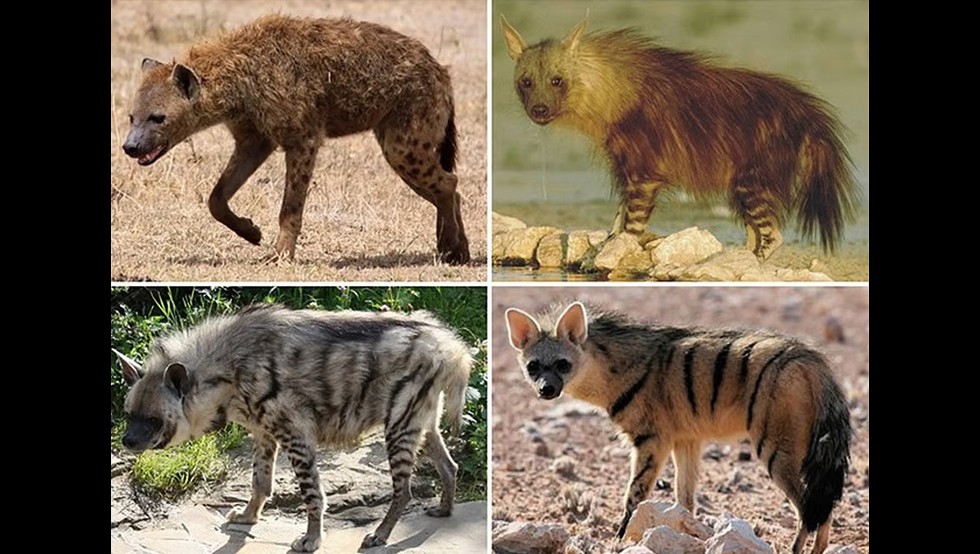
About Hyenas
- Hyenas are dog-like carnivores belonging to the family Hyaenidae, native to Asia and Africa, noted for their scavenging habits.
- There are four extant hyena species:
- Spotted Hyena (Crocuta crocuta)
- Striped Hyena (Hyaena hyaena)
- Brown Hyena (Parahyaena brunnea)
- Aardwolf (Proteles cristatus)
- Habitat: Forest edges, grasslands, savannas, sub-deserts, and mountains up to 13,000 feet elevation.
- Distribution: Across Africa, parts of the Middle East, and Asia.
Physical Features
- Hyenas are four-legged animals with scraggly fur and large ears.
- They have long forelegs, a powerful neck, and strong shoulders, allowing them to dismember and carry prey.
- Excellent sight, hearing, and sense of smell make them proficient scavengers and hunters.
- Hyenas are predominantly nocturnal, being most active during the night.
- Their lifespan averages 12 years, although they can live up to 25 years; Brown hyenas typically have a shorter lifespan.
Conservation Status (IUCN)
- Spotted Hyena: Least Concern but declining, with fewer than 50,000 individuals remaining.
- Striped Hyena: Near Threatened, with less than 10,000 mature individuals.
- Brown Hyena: Near Threatened, with just over 10,000 in the wild.
- Aardwolf: Least Concern, though exact numbers are unknown due to their elusive nature.
Prelims Pointers
April 28, 2025

About Bonds and Inflation Impact
- A bond is a financial instrument that promises a fixed return (face value) at the end of a specific period, unlike equity, which has no fixed term or guaranteed returns.
- Bonds are generally safer investments used to hedge against risks or act as a store of value.
- Bond yields are inversely proportional to their market price: when prices fall, yields rise.
- Inflation erodes the real returns from bonds. If inflation exceeds bond yield, investors lose purchasing power.
- When inflation expectations rise, the Central Bank typically raises interest rates, causing bond prices to fall and yields to rise, impacting investment decisions across the economy.
- Currency depreciation also impacts foreign bondholders negatively, reducing their real returns when converting back to their home currency.
About the Indian Bond Market
- The Indian Bond Market is a vital segment of the financial system where government entities, corporations, and financial institutions raise funds by issuing bonds.
- Investors provide loans to the issuers and, in return, receive periodic interest payments and principal repayment upon maturity.
Structure of the Indian Bond Market
- Primary Bond Market: In the Primary Market, new bonds are issued by the government, corporations, or financial institutions to raise capital.
- Government Securities (G-Secs): Bonds issued by Central and State Governments, including Treasury Bills (short-term) and Government Bonds (long-term).
- Corporate Bonds: Bonds issued by private or public companies, credit-rated based on their creditworthiness.
- Municipal Bonds: Issued by local governing bodies for funding public infrastructure projects.
- Public Sector Undertaking (PSU) Bonds: Bonds issued by government-owned corporations.
- Green Bonds: Dedicated bonds for financing environmentally sustainable projects.
- Masala Bonds: Rupee-denominated bonds issued in foreign markets.
- Secondary Bond Market: In the Secondary Market, previously issued bonds are traded among investors.
- Examples include instruments like Treasury Bills (T-Bills), Commercial Papers (CPs), and Certificates of Deposit (CDs).
Prelims Pointers
April 28, 2025
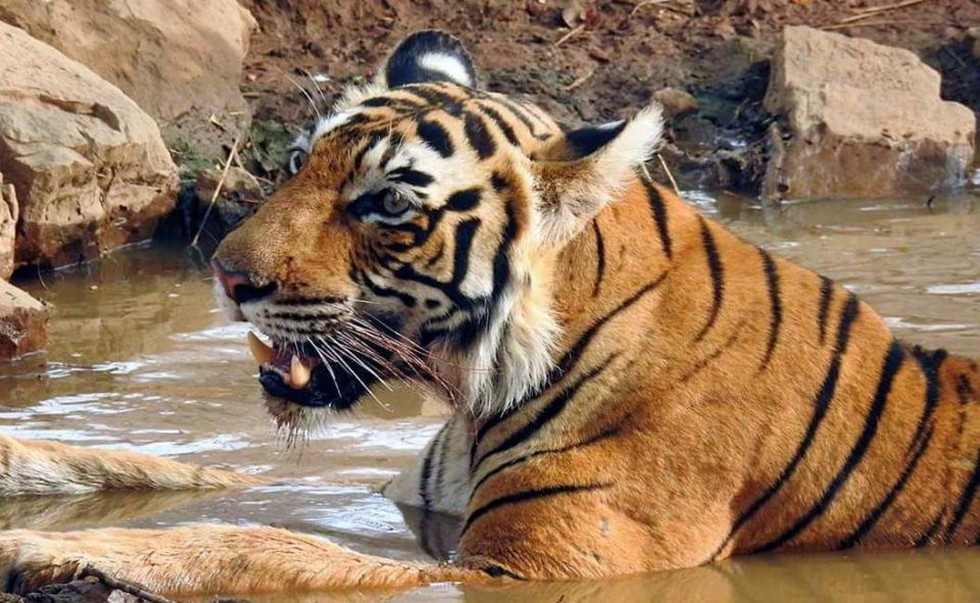
About Critical Tiger Habitat (CTH):
- Critical Tiger Habitat (CTH), also known as core areas of tiger reserves, are identified under the Wild Life Protection Act (WLPA), 1972.
- These are based on scientific evidence that "such areas are required to be kept as inviolate for the purpose of tiger conservation, without affecting the rights of the Scheduled Tribes or such other forest dwellers".
- The notification of CTH is done by the state government in consultation with the expert committee constituted for the purpose.
- Inviolate Status: These areas are kept inviolate (free from human activities) for the purpose of tiger conservation.
- The forests peripheral to CTH are notified as buffer areas, which act as a transition between CTH and non-tiger reserves.
Key Facts about Central Empowered Committee (CEC):
- It was set up in 2002 (reconstituted in 2008) by the Supreme Court.
- It served as a watchdog for issues pertaining to environmental conservation and compliance.
- In 2023, the Supreme Court transferred the CEC, to the Ministry of Environment, Forest, and Climate Change.
- According to the Union Environment Ministry’s notification, the central empowered committee will now be institutionalised as a permanent statutory body, moving away from its earlier ad hoc status.
- Composition of the new CEC
- It will have a chairman with experience of 25 years in the field of environment, forests and wildlife or proven administrative experience of not less than 25 years in the central or state governments.
- He will be nominated by the central government for a tenure of three years.
- The age limit for the Chairperson is set at 66 years, and the rank must not be below that of an Additional Secretary.
- The member secretary will be a full-time serving officer of the government not below the rank of Deputy Inspector General of forests or director in the Government of India.
- This person is required to have special knowledge in the field of environment, forests, or wildlife, and experience of at least 12 years.
- The member secretary too, will be appointed by the Centre.
- The three expert members will be one each from the fields of the environment, forests, and wildlife with experience of at least 20 years.
- They will also be nominated by the Centre for a tenure of three years.
- One notable change in the new central empowered committee structure is the exclusion of Non-Governmental Organisations (NGOs), which were previously part of the committee.
Prelims Pointers
April 28, 2025
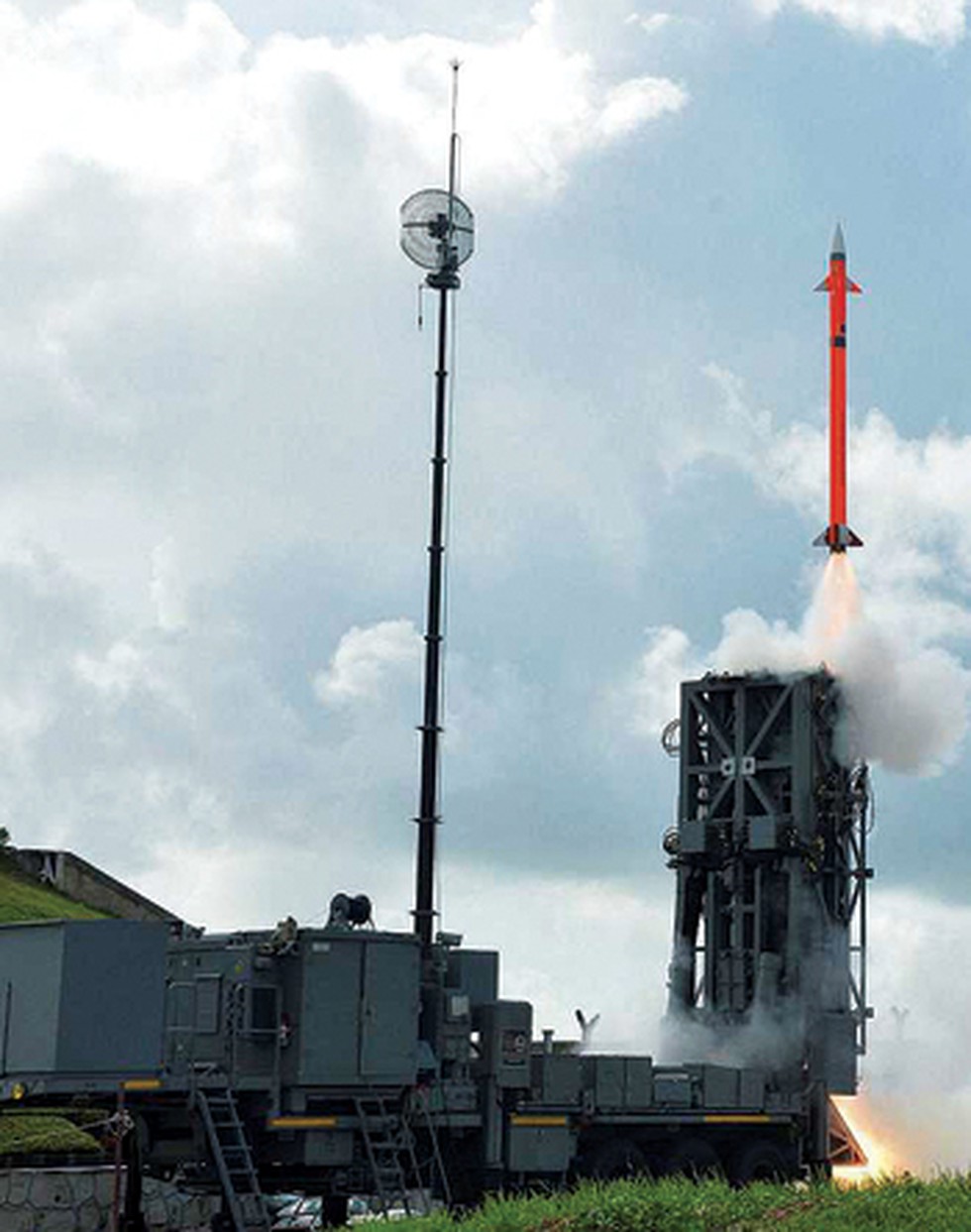
About Medium Range-Surface to Air Missile (MR-SAM):
- It is a high-response, quick-reaction, vertically launched supersonic missile designed to neutralize enemy aerial threats – missiles, aircraft, guided bombs, helicopters, etc.
- It is developed jointly by Defence Research and Development Organisation (DRDO) and Israel Aerospace Industries, and is produced at Bharat Dynamics Limited (BDL).
- Features:
- Each MRSAM weapon system comprises one command and control system, one tracking radar, missiles, and mobile launcher
- The mobile launcher is used to transport, emplace, and launch up to eight canisterised missiles in two stacks.
- It can fire the missiles in single or ripple firing modes from the vertical firing position.
- The weapon is 4.5 m-long, weighs approximately 276kg, and is equipped with canards and fins for control and manoeuvrability.
- It is equipped with an advanced active radar radio frequency (RF) seeker, advanced rotating phased array radar, and a bidirectional data link.
- It is powered by a dual-pulse solid propulsion system developed by DRDO.
- The propulsion system, coupled with a thrust vector control system, allows the missile to move at a maximum speed of Mach 2.
- The weapon has the ability to engage multiple targets simultaneously at ranges of 70 km.
Prelims Pointers
April 28, 2025
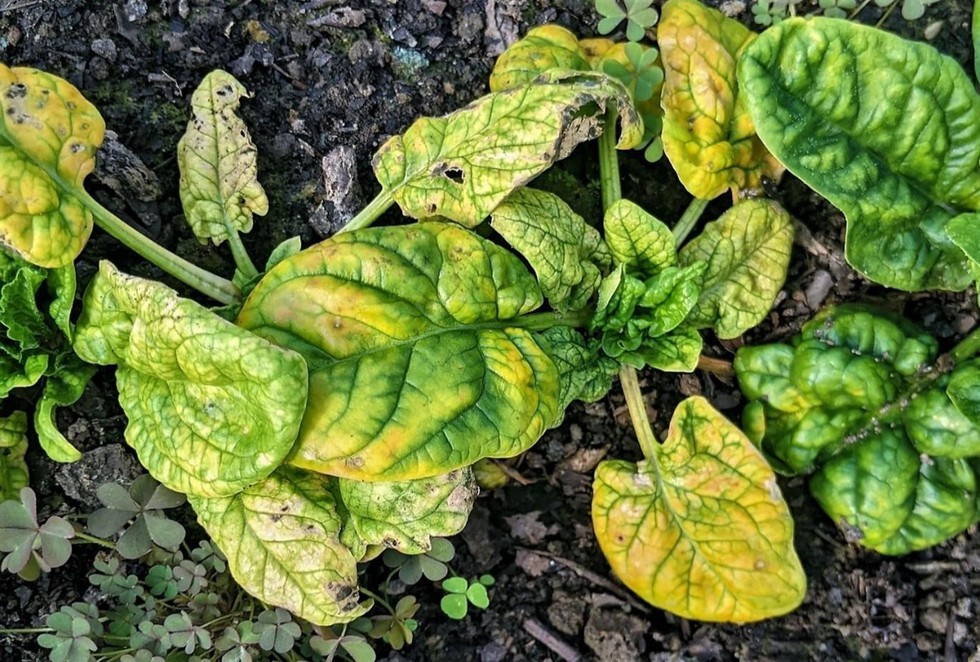
About Cucumber Mosaic Virus (CMV):
- It is one of the most common plant viruses.
- CMV was first identified in 1916 as the causal agent of cucumber and muskmelon disease in the United States.
- CMV infects more than 1,200 plant species, including critical food crops like cucumbers, squash, and cereals, and medicinal plants.
- It spreads through small sap-sucking insects called aphids.
- With nearly 90 aphid species capable of transmitting CMV, outbreaks are often difficult to contain.
- In India, CMV is responsible for 25-30% yield losses in banana plantations. In pumpkins, cucumbers, and melons, infection rates can soar up to 70%.
- Symptoms: Affected plants develop a mosaic discolouration, stunted growth, and commercially unviable fruits.
- Management:
- Cultural practices and the heavy use of agrochemicals are the most common control measures for CMV.
- There is no known cure for cucumber mosaic.
- Infected plants should be removed and destroyed to eliminate the plants as potential reservoirs for the virus (which can subsequently be spread to other nearby healthy plants).
Prelims Pointers
April 28, 2025

About Balikatan Exercise:
- It is the largest bilateral exercise conducted between the Armed Forces of the Philippines and the United States.
- “Balikatan,” a Tagalog phrase that means “shoulder-to-shoulder,” characterizes the spirit of the exercise and represents the alliance between the Philippines and the United States.
- Held annually, Exercise Balikatan is designed to enhance military interoperability and readiness in support of the Mutual Defense Treaty between the United States and the Philippines.
- The 2025 edition is the 40th iteration of the exercise.
- Distinguishing itself from past iterations, Balikatan 25 will feature a Full Battle Test that incorporates real-world forces and events into a virtual and constructive exercise scenario.
- The exercise will span all domains—air, land, sea, space, and cyber—testing the interoperability between U.S. and Philippine forces to simulate the defense of Philippine sovereignty.
- The exercise will consist of four primary components: a Combined Joint Logistics Over-the-Shore (CJLOTS) operation, humanitarian civic assistance (HCA) activities, a command-and-control exercise (C2X), and a Multilateral Maritime Exercise (MME).
- Each component will encompass several training events and engagement throughout the Philippines.
Prelims Pointers
April 28, 2025

About Indian Cybercrime Coordination Centre (I4C):
- I4C has been established under the Ministry of Home Affairs (MHA) to act as a nodal point at the National level in the fight against cybercrime.
- It is designed to provide a framework and ecosystem for law enforcement agencies (LEAs) to deal with cybercrime in a coordinated and comprehensive manner.
- I4C brings together academia, industry, public, and government in the prevention, detection, investigation, and prosecution of cybercrimes.
- Headquarters: New Delhi
- Objectives:
- To act as a nodal point to curb Cybercrime in the country.
- To strengthen the fight against Cybercrime committed against women and children.
- Facilitate easy filing of cybercrime related complaints and identifying cybercrime trends and patterns.
- To act as an early warning system for LEAs for proactive cybercrime prevention and detection.
- Awareness creation among the public about preventing cybercrime.
- Assist States/UTs in capacity building of Police Officers, Public Prosecutors and Judicial Officers in the area of cyber forensic, investigation, cyber hygiene, cyber-criminology, etc.
- Identify the research problems and needs of LEAs and take up R&D activities in developing new technologies and forensic tools in collaboration with academia/research institutes within India and abroad.
- Suggest amendments, if required, in cyber laws to keep pace with fast-changing technologies and international cooperation.
- To coordinate all activities related to the implementation of Mutual Legal Assistance Treaties (MLAT) with other countries related to cybercrimes in consultation with the concerned nodal authority in MHA.
- Components of I4C:
- National Cybercrime Threat Analytics Unit (TAU): For reporting threats pertaining to cybercrimes at regular intervals.
- National Cybercrime Reporting Portal (NCRP): To report various cybercrime complaints by citizens at all India levels on a common platform on a 24x7 basis from “anywhere, anytime”.
- National Cybercrime Training Centre (NCTC): To impart training to government officials, especially state law enforcement agencies.
- National Cybercrime Research and Innovation Centre: To carry out research for the development of indigenous tools for the prevention of cybercrimes.
- Platform for Joint Cyber Crime Coordination Team: For coordination, sharing of modus operandi of cybercrimes, data/information among states/UTs LEAs.
- Cybercrime Ecosystem Management Unit: For creating mass awareness in cyber hygiene for prevention of cybercrimes.
- National Cybercrime Forensic Laboratory (Investigation) Ecosystem: For helping LEAs in cyber forensics investigation.
- Other Initiatives:
- Citizen Financial Cyber Fraud Reporting and Management System: For immediate reporting of financial cyber frauds and preventing the siphoning of funds by cyber criminals on a near-real-time basis.
- National Toll-Free Helpline number ‘1930’ has been operationalized to provide citizen assistance in lodging online cyber complaints.
- The social media handle “CyberDost”, which provides cyber safety tips at regular intervals.
- I4C has envisaged the Cyber Crime Volunteers Program to bring together citizens with a passion to serve the nation on a single platform and contribute to the fight against cybercrime in the country.
April 27, 2025
Prelims Pointers
April 27, 2025
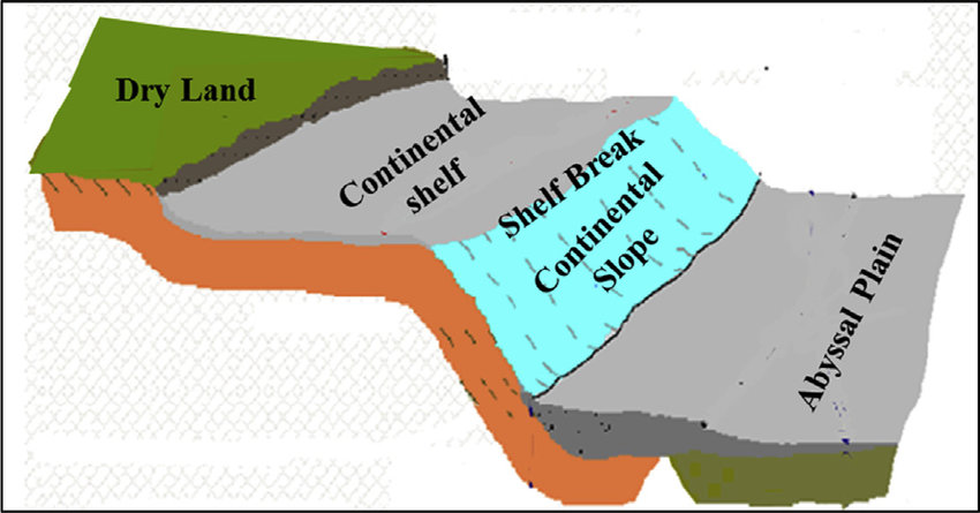
About Continental Shelf:
- It is the edge of a continent that lies under the ocean.
- It is the extension of a coastal State’s land territory under the sea.
- It extends from the coastline of a continent to a drop-off point called the shelf break.
- From the break, the shelf descends toward the deep ocean floor in what is called the continental slope.
- The actual boundary of a continent is not its coastline, but the edge of the continental shelf.
- Formation:
- Over many millions of years, organic and inorganic materials form continental shelves.
- Inorganic material build up as rivers carried sediment—bits of rock, soil, and gravel—to the edges of the continents and into the ocean.
- These sediments gradually accumulate in layers at the edges of continents.
- Organic material, such as the remains of plants and animals, also accumulate.
- The widths of the continental shelves vary.
- Most continental shelves are broad, gently sloping plains covered by relatively shallow water. Water depth over the continental shelves averages about 60 meters (200 feet).
- Sunlight penetrates the shallow waters, and many kinds of organisms flourish—from microscopic shrimp to giant seaweed called kelp.
- Ocean currents and runoff from rivers bring nutrients to organisms that live on continental shelves.
- Plants and algae make continental shelves rich feeding grounds for sea creatures.
- The shelves make up less than 10 percent of the total area of the oceans.
- In some places, deep canyons and channels cut through the continental shelves.
- Little light penetrates these submarine canyons, and they are sometimes the least-explored areas of continents.
What is the Extended Continental Shelf?
- Geopolitically, under the United Nations Convention on the Law of the Sea (UNCLOS), coastal countries have special rights over the continental shelf for exploring and exploiting natural resources up to 200 nautical miles (exclusive economic zone).
- In addition to this, such States can make claims for more area in the ocean provided they can scientifically establish to a UN body, called the Commission on the Limits of the Continental Shelf (CLCS), that this claimed area extends unbroken from their landmass all the way to the seabed.
- All of this oceanic area is considered part of a country’s extended continental shelf.
- This gives them rights to commercially mine for valuable minerals, polymetallic nodules, and oil reserves.
Prelims Pointers
April 27, 2025
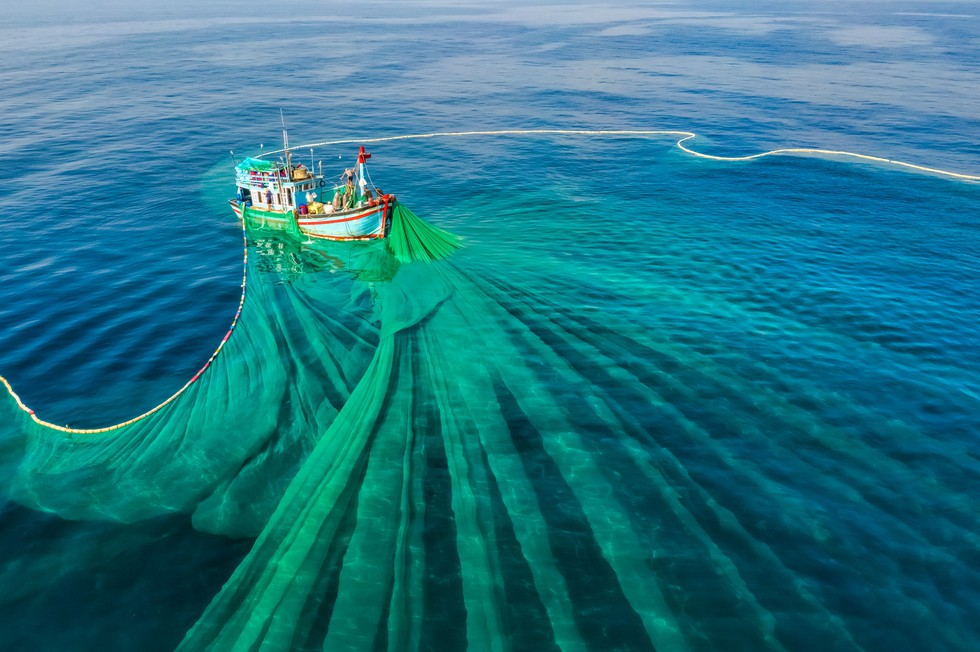
About UN High Seas Treaty:
- The Biodiversity Beyond National Jurisdiction (BBNJ) Agreement , or the ‘High Seas Treaty’, is an international treaty under the United Nations Convention on the Law of the Sea (UNCLOS).
- It is the first-ever treaty to protect the world's oceans that lie outside national boundaries.
- It is also known as the ‘Paris Agreement for the Ocean.’
- It is a legally binding treaty to protect marine life in international waters.
- It sets precise mechanisms for the sustainable use of marine biological diversity through international cooperation and coordination.
- It would also contribute to achieving several SDGs, particularly SDG14 (Life Below Water).
- The treaty will enter into force 120 days after the 60th country formally ratifies the agreement.
- Features:
- It contains 75 articles that aim at protecting, caring for, and ensuring the responsible use of the marine environment, maintaining the integrity of ocean ecosystems, and conserving the inherent value of marine biological diversity.
- It aims to place 30% of the seas into protected areas by 2030 (a pledge made by countries at the UN biodiversity conference in 2022).
- It will provide a legal framework for establishing vast marine protected areas (MPAs) to protect against the loss of wildlife and share out the genetic resources of the high seas.
- It also covers environmental assessments to evaluate the potential damage of commercial activities, such as deep-sea mining.
- It will establish a Conference of Parties (CoP) that will meet periodically and enable member states to be held to account on issues such as governance and biodiversity.
- The treaty also includes a pledge by signatories to share ocean resources.
- Parties cannot claim or exercise sovereign rights over marine resources derived from the high seas and ensure fair and equitable sharing of benefits.
- It follows an inclusive, integrated, ecosystem-centric approach based on the precautionary principle and promotes using traditional knowledge and the best available scientific knowledge.
- It helps minimise impacts on the marine environment through area-based management tools and establishes rules for conducting environmental impact assessments.
What are High Seas?
- The high seas begin at the border of countries’ exclusive economic zones, which extend up to 370 km (200 nautical miles) from coastlines.
- Beyond that point, the seas are under the jurisdiction of no country, and all countries have a right to fish, ship, and do research.
- They make up more than 60% of the world’s oceans by surface area.
- Activities on the high seas are often unregulated and insufficiently monitored, leaving them vulnerable to exploitation.
Prelims Pointers
April 27, 2025
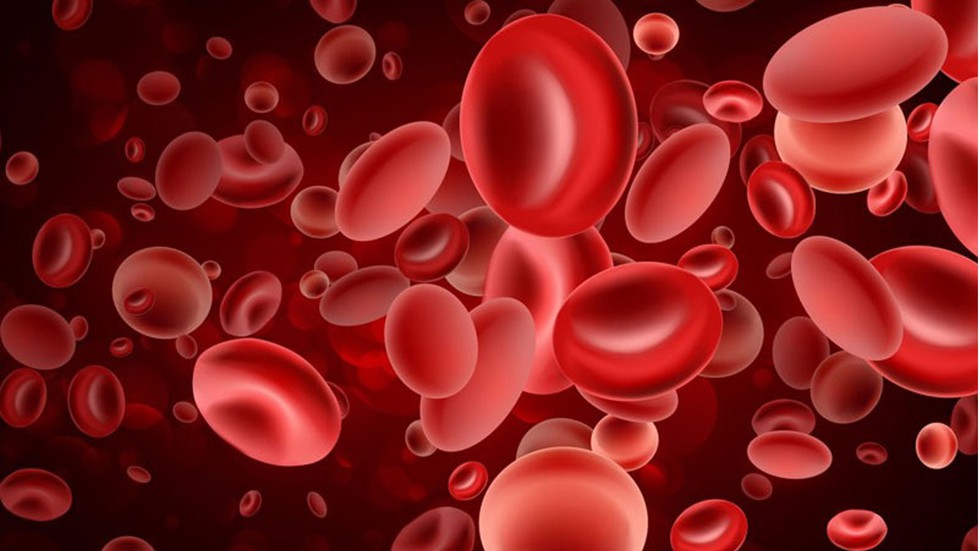
About Anaemia:
- Anemia is a problem of not having enough healthy red blood cells or hemoglobin to carry oxygen to the body's tissues.
- Hemoglobin is a protein found in red cells that carries oxygen from the lungs to all other organs in the body.
- Having anemia can cause tiredness, weakness, and shortness of breath.
- There are many forms of anemia. Each has its own cause.
- Some types of anemia are inherited, but people may also acquire or develop the condition during their lifetimes.
- WHO estimates that 40% of children 6–59 months of age, 37% of pregnant women, and 30% of women 15–49 years of age worldwide are anaemic.
- Anaemia can be short-term or long-term. It can range from mild to severe.
- Severe anemia can be life-threatening. This condition may also be a symptom of serious conditions like
- A common type of anemia is iron-deficiency anaemia, which is usually caused by not eating or absorbing enough iron, or by losing blood.
- Treatments for anemia might involve taking supplements or having medical procedures.
- Eating a healthy diet might prevent some forms of anemia.
Prelims Pointers
April 27, 2025
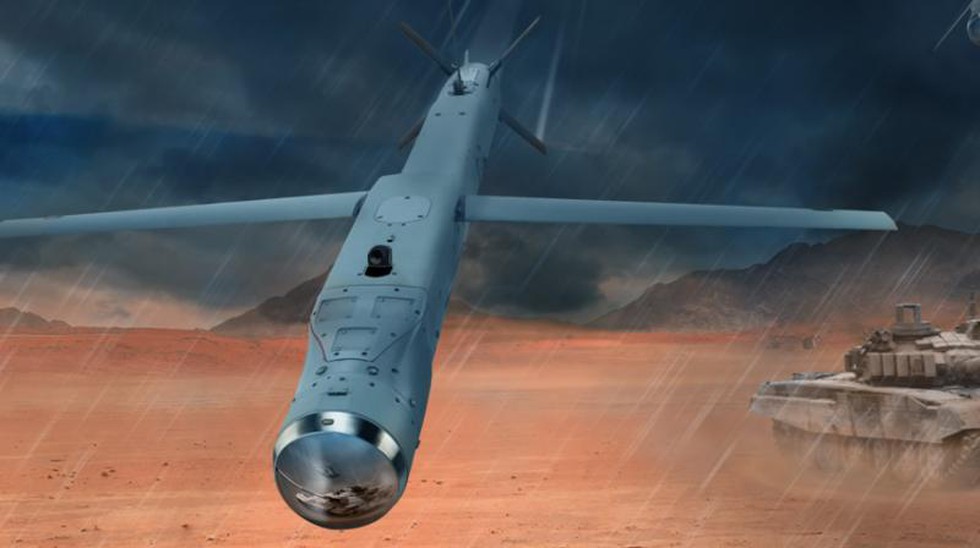
About StormBreaker Glide Bomb:
- The Stormbreaker, designated as the GBU-53/B and also known as the Small Diameter Bomb II (SDB-II), is an American air-launched, precision-guided glide bomb developed by Raytheon.
- It is designed for all-weather precision strikes against both stationary and moving targets.
- Features:
- The weapon weighs 93 kg, measures 1.76 meters in length, and has a diameter ranging from 15 to 18 cm.
- It features a multi-mode guidance system that combines millimeter-wave radar, uncooled infrared imaging, and a digital semi-active laser.
- Its GPS/INS navigation system allows for real-time in-flight target updates, enhancing adaptability to evolving mission requirements.
- It incorporates TacNet Data Link (DL) technology, enabling weapon-to-weapon collaboration.
- This system facilitates Automatic Target Recognition (ATR) to identify and engage tracked or wheeled vehicles.
- It features a multi-effects warhead that enhances lethality against a range of targets.
- The weapon, which combines blast, fragmentation, and shaped charge modes, guarantees decisive outcomes with each attack, efficiently eliminating threats on the battlefield.
- It can strike moving targets at a range of 45 miles and stationary targets at a maximum range of 69 miles.
Prelims Pointers
April 27, 2025

About Line of Control (LoC):
- The LoC is the de facto military boundary between India and Pakistan in the region of Jammu and Kashmir.
- It is not an international boundary but a ceasefire line that was established after the 1947-48 India-Pakistan war over Kashmir.
- Then called the Ceasefire Line (CFL), it was redesignated as the "Line of Control" following the Simla Agreement, which was signed on 3 July 1972, following the 1971 Indo-Pakistan war.
- The LoC stretches about 740 kilometers, from the region of Ladakh in the north down to the Poonch district in the south.
- It is heavily militarized, with frequent skirmishes and exchanges of fire between Indian and Pakistani forces.
- On the Indian side of the LoC comes a part of Jammu and Kashmir and Ladakh. On the Pakistani side comes the part of Pakistan Occupied Kashmir (POK), Gilgit, and Baltistan.
- The LoC is different from the International Border (IB), which is the officially recognized border between India and Pakistan elsewhere.
Prelims Pointers
April 27, 2025

About Mahuadanr Wolf Sanctuary
- Mahuadanr Wolf Sanctuary, located in the Latehar district of Jharkhand, is India’s first and only wolf sanctuary, dedicated to the conservation of the Indian grey wolf (Canis lupus pallipes).
- The sanctuary, spread over approximately 63 square kilometers, was declared in 1976 specifically for the protection of the Indian wolf population.
- Mahuadanr Wolf Sanctuary is an integral part of the Palamau Tiger Reserve.
- The wildlife of the sanctuary includes species such as spotted deer, wild boar, hyena, bear, and notably, the Indian wolf.
About the Indian Grey Wolf
- The Indian grey wolf is a subspecies of the grey wolf found across Southwest Asia and the Indian subcontinent.
- It inhabits scrublands, grasslands, and semi-arid agroecosystems and thrives in warmer temperatures.
- Unlike other wolf subspecies, it lives in smaller packs and is less vocal, being primarily nocturnal and hunting from dusk to dawn.
Conservation Status:
- IUCN Red List: Endangered (Indian population estimated between 2,000–3,000 individuals).
- CITES: Listed in Appendix I, indicating the highest level of international protection.
- Wildlife Protection Act, 1972: Included under Schedule I, granting maximum legal protection in India.
Prelims Pointers
April 27, 2025

About
- Iran, with its capital at Tehran, is a prominent country located in West Asia.
- Iran shares land boundaries with Armenia, Azerbaijan, and Turkmenistan to the north, Afghanistan and Pakistan to the east, Iraq to the west, and Turkey to the northwest.
- Iran has maritime borders with Bahrain, Kuwait, Oman, Qatar, and Saudi Arabia.
- It is bordered by major water bodies, namely the Caspian Sea to the north, and the Persian Gulf and the Gulf of Oman to the south.
Geographical Features of Iran
- Iran's terrain is predominantly marked by the Iranian Plateau, characterised by vast deserts like the Dasht-e Kavir and Dasht-e Lut.
- The country is home to important mountain ranges such as the Zagros Mountains in the west and the Alborz Mountains in the north.
- Mount Damavand, located in the Alborz Mountain Range, is the highest peak in Iran and also the highest volcano in the Middle East.
- Iran's climate varies from arid and semi-arid conditions to subtropical regions, especially along the Caspian coast.
- Major rivers in Iran include the Karun, Dez, Karkheh, and Diyala rivers, essential for irrigation and agriculture.
- Iran's natural resources are abundant and include oil and natural gas, along with coal, chromium, copper, iron ore, lead, manganese, zinc, and sulphur.
Strategic Importance of Shahid Rajaee Port
- Location: The port is located near the Strait of Hormuz, through which nearly 20% of global oil trade passes, making it a critical choke point in global energy security.
- Economic role: It is Iran’s largest and most technologically advanced container port, handling a significant share of the country’s import-export trade.
Prelims Pointers
April 27, 2025
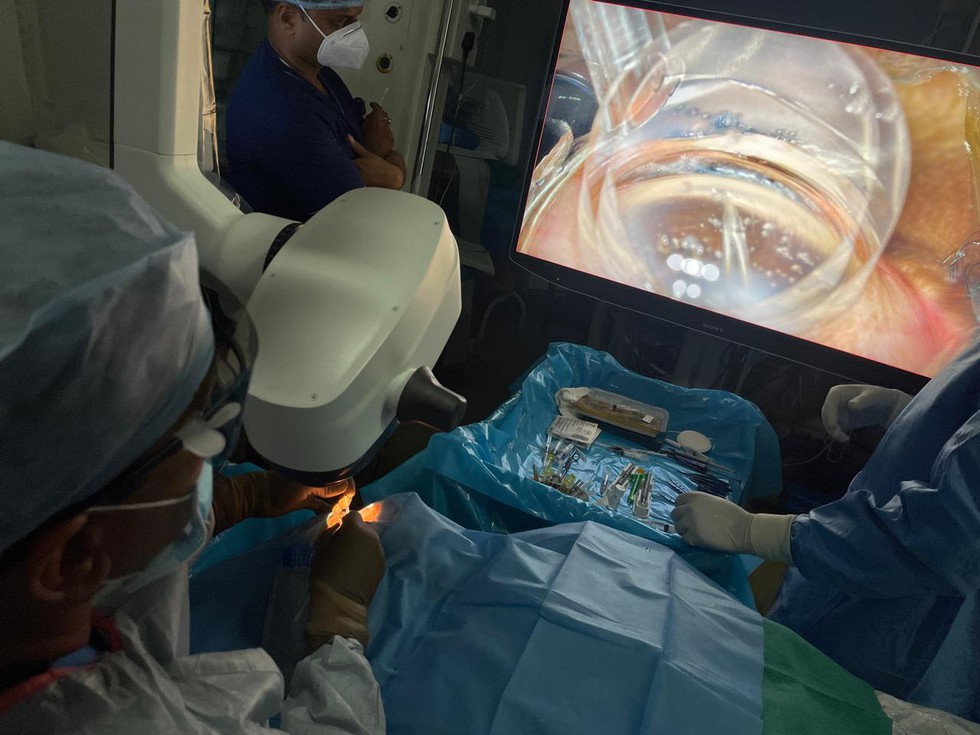
What is a Microscope?
- A microscope is an instrument that magnifies small objects, making them visible to the naked eye by bending (refracting) light rays through curved lenses.
- The most commonly used microscopes are optical microscopes, where visible light is focused through lenses to create an enlarged image.
What is a 3D Microscope?
- A 3D microscope produces images with depth information (X, Y, and Z axes), allowing researchers to visualize and measure the topography, volume, and internal structures of samples.
- Unlike traditional light microscopes, which provide flat, 2D images, 3D microscopes use advanced optical, electron, or computational techniques to capture and reconstruct three-dimensional data.
- This is particularly useful for studying complex biological or environmental samples, such as soil microbes, aquatic organisms, or
Features of the 3D Microscope
- The 3D Microscope uses advanced three-dimensional visualisation, assisting in complex eye surgeries such as treatment for squint, cataract, corneal diseases, glaucoma, and retinal conditions.
- It employs special 3D polarisation glasses for surgeons and a 55-inch 4K ultra-HD display.
- Key advantages include:
- Reduced surgical time and lower complication rates compared to conventional microscopes.
- Decreased endoilluminator power requirements, thereby reducing photo-toxicity risks.
- Ease of performing surgeries in complex and rare cases.
Prelims Pointers
April 27, 2025

Background
- The project successfully collected blood samples and associated phenotype data from over 20,000 individuals belonging to 83 population groups, comprising 30 tribal and 53 non-tribal populations spread across India.
- Preliminary findings based on the genetic data of 9,772 individuals were published in the journal Nature Genetics on April 8, 2025.
Types of Phenotype Data Collected
- The collected phenotype data included anthropometric measurements such as height, weight, hip circumference, waist circumference, and blood pressure.
- From the blood samples, complete blood counts and biochemical data such as glucose levels, lipid profiles, liver function, and kidney function tests were measured.
About 'Phenome India' Project
- Phenome India-CSIR Health Cohort Knowledgebase (PI-CheCK) is an initiative launched by the Council of Scientific and Industrial Research (CSIR) on December 7, 2023.
- The main objective of the project is to develop India-specific risk prediction models for cardio-metabolic diseases including diabetes, liver diseases, and cardiac diseases.
- It is India’s first-ever pan-India longitudinal health monitoring study focused specifically on cardio-metabolic health.
- Participants include around 10,000 individuals—primarily CSIR employees, pensioners, and their spouses—from across 17 states and 24 cities.
- Collected data includes clinical questionnaires, lifestyle and dietary habits, anthropometric measurements, imaging and scanning data, and extensive biochemical and molecular data.
- This study is crucial for understanding how ethnic diversity and lifestyle patterns unique to India influence the risk and incidence of cardio-metabolic disorders.
- Through this project, CSIR is promoting a Predictive, Personalised, Participatory, and Preventive (P4) healthcare model suited to Indian genetic and phenotypic profiles.
Prelims Pointers
April 27, 2025
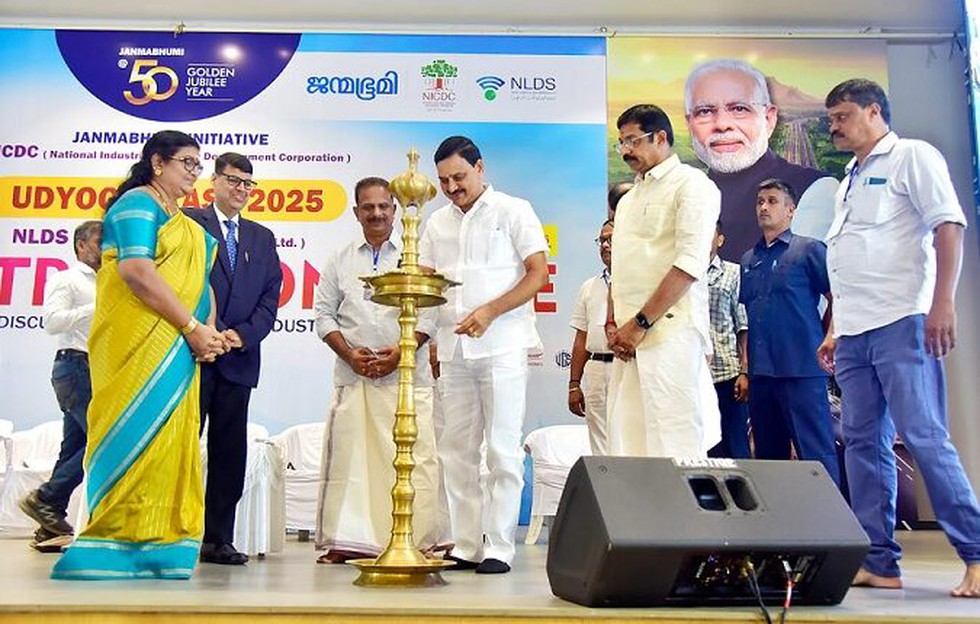
About National Industrial Corridor Development Programme (NICDP)
- NICDP is India's most ambitious infrastructure initiative aimed at developing new industrial cities as "Smart Cities", integrating next-generation technologies across infrastructure sectors.
- National Industrial Corridor Development Corporation (NICDC) is the nodal agency managing the programme.
- NICDP is designed to attract investments from both large anchor industries and Micro, Small, and Medium Enterprises (MSMEs), acting as a catalyst for achieving the Government’s goal of $2 trillion in exports by 2030.
- Newly sanctioned industrial areas under NICDP include: Khurpia (Uttarakhand), Rajpura-Patiala (Punjab), Dighi (Maharashtra), Palakkad (Kerala), Agra and Prayagraj (Uttar Pradesh), Gaya (Bihar), Zaheerabad (Telangana), Orvakal and Kopparthy (Andhra Pradesh), and Jodhpur-Pali (Rajasthan).
- These projects are closely aligned with the PM GatiShakti National Master Plan, ensuring integrated, seamless multi-modal connectivity across the country.
Palakkad Industrial Smart City (Kerala)
- The Palakkad Industrial Smart City, spanning 1,710 acres across Pudussery Central, Pudussery West, and Kannambra, is set to reshape Kerala’s industrial landscape.
- Strategic location advantages:
- 21 km from Palakkad city
- 120 km from Cochin
- 50 km from Coimbatore
- Offering seamless interstate connectivity and strong logistical benefits.
- Designed to be South India's key industrial gateway, it ensures multimodal connectivity via road, rail, and air, making it attractive for high-quality investments, regional employment generation, and innovation.
Prelims Pointers
April 27, 2025
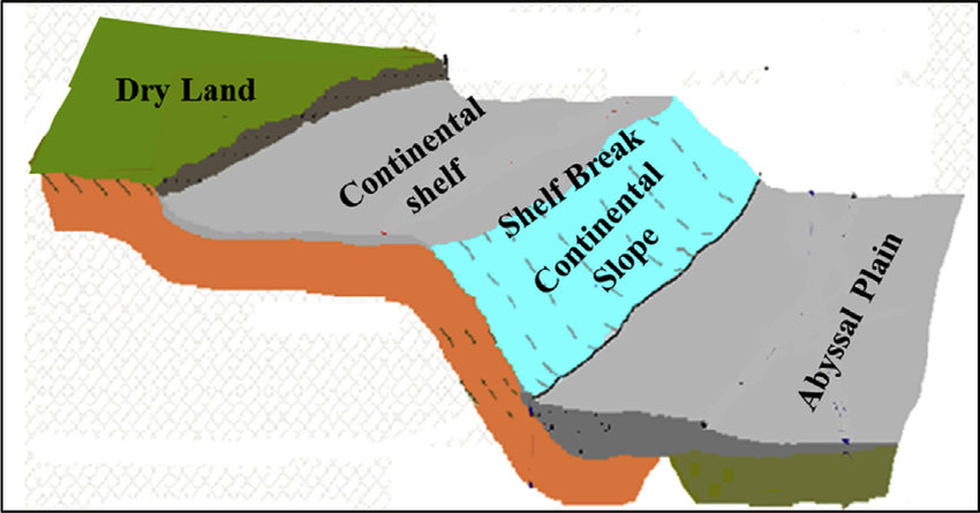
About Continental Shelf:
- It is the edge of a continent that lies under the ocean.
- It is the extension of a coastal State’s land territory under the sea.
- It extends from the coastline of a continent to a drop-off point called the shelf break.
- From the break, the shelf descends toward the deep ocean floor in what is called the continental slope.
- The actual boundary of a continent is not its coastline, but the edge of the continental shelf.
- Formation:
- Over many millions of years, organic and inorganic materials form continental shelves.
- Inorganic material build up as rivers carried sediment—bits of rock, soil, and gravel—to the edges of the continents and into the ocean.
- These sediments gradually accumulate in layers at the edges of continents.
- Organic material, such as the remains of plants and animals, also accumulate.
- The widths of the continental shelves vary.
- Most continental shelves are broad, gently sloping plains covered by relatively shallow water. Water depth over the continental shelves averages about 60 meters (200 feet).
- Sunlight penetrates the shallow waters, and many kinds of organisms flourish—from microscopic shrimp to giant seaweed called kelp.
- Ocean currents and runoff from rivers bring nutrients to organisms that live on continental shelves.
- Plants and algae make continental shelves rich feeding grounds for sea creatures.
- The shelves make up less than 10 percent of the total area of the oceans.
- In some places, deep canyons and channels cut through the continental shelves.
- Little light penetrates these submarine canyons, and they are sometimes the least-explored areas of continents.
What is the Extended Continental Shelf?
- Geopolitically, under the United Nations Convention on the Law of the Sea (UNCLOS), coastal countries have special rights over the continental shelf for exploring and exploiting natural resources up to 200 nautical miles (exclusive economic zone).
- In addition to this, such States can make claims for more area in the ocean provided they can scientifically establish to a UN body, called the Commission on the Limits of the Continental Shelf (CLCS), that this claimed area extends unbroken from their landmass all the way to the seabed.
- All of this oceanic area is considered part of a country’s extended continental shelf.
- This gives them rights to commercially mine for valuable minerals, polymetallic nodules, and oil reserves.
Prelims Pointers
April 27, 2025

About UN High Seas Treaty:
- The Biodiversity Beyond National Jurisdiction (BBNJ) Agreement , or the ‘High Seas Treaty’, is an international treaty under the United Nations Convention on the Law of the Sea (UNCLOS).
- It is the first-ever treaty to protect the world's oceans that lie outside national boundaries.
- It is also known as the ‘Paris Agreement for the Ocean.’
- It is a legally binding treaty to protect marine life in international waters.
- It sets precise mechanisms for the sustainable use of marine biological diversity through international cooperation and coordination.
- It would also contribute to achieving several SDGs, particularly SDG14 (Life Below Water).
- The treaty will enter into force 120 days after the 60th country formally ratifies the agreement.
- Features:
- It contains 75 articles that aim at protecting, caring for, and ensuring the responsible use of the marine environment, maintaining the integrity of ocean ecosystems, and conserving the inherent value of marine biological diversity.
- It aims to place 30% of the seas into protected areas by 2030 (a pledge made by countries at the UN biodiversity conference in 2022).
- It will provide a legal framework for establishing vast marine protected areas (MPAs) to protect against the loss of wildlife and share out the genetic resources of the high seas.
- It also covers environmental assessments to evaluate the potential damage of commercial activities, such as deep-sea mining.
- It will establish a Conference of Parties (CoP) that will meet periodically and enable member states to be held to account on issues such as governance and biodiversity.
- The treaty also includes a pledge by signatories to share ocean resources.
- Parties cannot claim or exercise sovereign rights over marine resources derived from the high seas and ensure fair and equitable sharing of benefits.
- It follows an inclusive, integrated, ecosystem-centric approach based on the precautionary principle and promotes using traditional knowledge and the best available scientific knowledge.
- It helps minimise impacts on the marine environment through area-based management tools and establishes rules for conducting environmental impact assessments.
What are High Seas?
- The high seas begin at the border of countries’ exclusive economic zones, which extend up to 370 km (200 nautical miles) from coastlines.
- Beyond that point, the seas are under the jurisdiction of no country, and all countries have a right to fish, ship, and do research.
- They make up more than 60% of the world’s oceans by surface area.
- Activities on the high seas are often unregulated and insufficiently monitored, leaving them vulnerable to exploitation.
Prelims Pointers
April 27, 2025
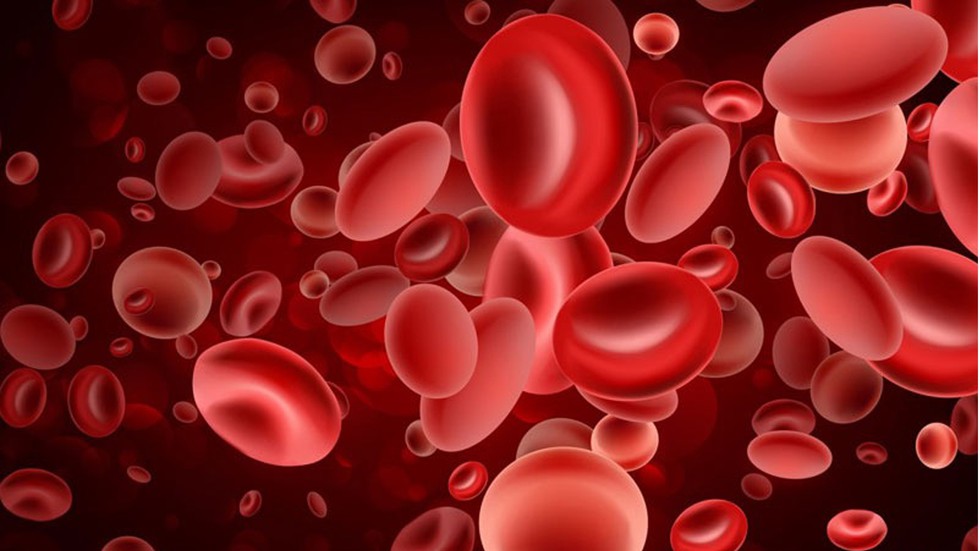
About Anaemia:
- Anemia is a problem of not having enough healthy red blood cells or hemoglobin to carry oxygen to the body's tissues.
- Hemoglobin is a protein found in red cells that carries oxygen from the lungs to all other organs in the body.
- Having anemia can cause tiredness, weakness, and shortness of breath.
- There are many forms of anemia. Each has its own cause.
- Some types of anemia are inherited, but people may also acquire or develop the condition during their lifetimes.
- WHO estimates that 40% of children 6–59 months of age, 37% of pregnant women, and 30% of women 15–49 years of age worldwide are anaemic.
- Anaemia can be short-term or long-term. It can range from mild to severe.
- Severe anemia can be life-threatening. This condition may also be a symptom of serious conditions like
- A common type of anemia is iron-deficiency anaemia, which is usually caused by not eating or absorbing enough iron, or by losing blood.
- Treatments for anemia might involve taking supplements or having medical procedures.
- Eating a healthy diet might prevent some forms of anemia.
Prelims Pointers
April 27, 2025

About StormBreaker Glide Bomb:
- The Stormbreaker, designated as the GBU-53/B and also known as the Small Diameter Bomb II (SDB-II), is an American air-launched, precision-guided glide bomb developed by Raytheon.
- It is designed for all-weather precision strikes against both stationary and moving targets.
- Features:
- The weapon weighs 93 kg, measures 1.76 meters in length, and has a diameter ranging from 15 to 18 cm.
- It features a multi-mode guidance system that combines millimeter-wave radar, uncooled infrared imaging, and a digital semi-active laser.
- Its GPS/INS navigation system allows for real-time in-flight target updates, enhancing adaptability to evolving mission requirements.
- It incorporates TacNet Data Link (DL) technology, enabling weapon-to-weapon collaboration.
- This system facilitates Automatic Target Recognition (ATR) to identify and engage tracked or wheeled vehicles.
- It features a multi-effects warhead that enhances lethality against a range of targets.
- The weapon, which combines blast, fragmentation, and shaped charge modes, guarantees decisive outcomes with each attack, efficiently eliminating threats on the battlefield.
- It can strike moving targets at a range of 45 miles and stationary targets at a maximum range of 69 miles.
Prelims Pointers
April 27, 2025

About Line of Control (LoC):
- The LoC is the de facto military boundary between India and Pakistan in the region of Jammu and Kashmir.
- It is not an international boundary but a ceasefire line that was established after the 1947-48 India-Pakistan war over Kashmir.
- Then called the Ceasefire Line (CFL), it was redesignated as the "Line of Control" following the Simla Agreement, which was signed on 3 July 1972, following the 1971 Indo-Pakistan war.
- The LoC stretches about 740 kilometers, from the region of Ladakh in the north down to the Poonch district in the south.
- It is heavily militarized, with frequent skirmishes and exchanges of fire between Indian and Pakistani forces.
- On the Indian side of the LoC comes a part of Jammu and Kashmir and Ladakh. On the Pakistani side comes the part of Pakistan Occupied Kashmir (POK), Gilgit, and Baltistan.
- The LoC is different from the International Border (IB), which is the officially recognized border between India and Pakistan elsewhere.
Prelims Pointers
April 27, 2025

About Mahuadanr Wolf Sanctuary
- Mahuadanr Wolf Sanctuary, located in the Latehar district of Jharkhand, is India’s first and only wolf sanctuary, dedicated to the conservation of the Indian grey wolf (Canis lupus pallipes).
- The sanctuary, spread over approximately 63 square kilometers, was declared in 1976 specifically for the protection of the Indian wolf population.
- Mahuadanr Wolf Sanctuary is an integral part of the Palamau Tiger Reserve.
- The wildlife of the sanctuary includes species such as spotted deer, wild boar, hyena, bear, and notably, the Indian wolf.
About the Indian Grey Wolf
- The Indian grey wolf is a subspecies of the grey wolf found across Southwest Asia and the Indian subcontinent.
- It inhabits scrublands, grasslands, and semi-arid agroecosystems and thrives in warmer temperatures.
- Unlike other wolf subspecies, it lives in smaller packs and is less vocal, being primarily nocturnal and hunting from dusk to dawn.
Conservation Status:
- IUCN Red List: Endangered (Indian population estimated between 2,000–3,000 individuals).
- CITES: Listed in Appendix I, indicating the highest level of international protection.
- Wildlife Protection Act, 1972: Included under Schedule I, granting maximum legal protection in India.
Prelims Pointers
April 27, 2025

About
- Iran, with its capital at Tehran, is a prominent country located in West Asia.
- Iran shares land boundaries with Armenia, Azerbaijan, and Turkmenistan to the north, Afghanistan and Pakistan to the east, Iraq to the west, and Turkey to the northwest.
- Iran has maritime borders with Bahrain, Kuwait, Oman, Qatar, and Saudi Arabia.
- It is bordered by major water bodies, namely the Caspian Sea to the north, and the Persian Gulf and the Gulf of Oman to the south.
Geographical Features of Iran
- Iran's terrain is predominantly marked by the Iranian Plateau, characterised by vast deserts like the Dasht-e Kavir and Dasht-e Lut.
- The country is home to important mountain ranges such as the Zagros Mountains in the west and the Alborz Mountains in the north.
- Mount Damavand, located in the Alborz Mountain Range, is the highest peak in Iran and also the highest volcano in the Middle East.
- Iran's climate varies from arid and semi-arid conditions to subtropical regions, especially along the Caspian coast.
- Major rivers in Iran include the Karun, Dez, Karkheh, and Diyala rivers, essential for irrigation and agriculture.
- Iran's natural resources are abundant and include oil and natural gas, along with coal, chromium, copper, iron ore, lead, manganese, zinc, and sulphur.
Strategic Importance of Shahid Rajaee Port
- Location: The port is located near the Strait of Hormuz, through which nearly 20% of global oil trade passes, making it a critical choke point in global energy security.
- Economic role: It is Iran’s largest and most technologically advanced container port, handling a significant share of the country’s import-export trade.
Prelims Pointers
April 27, 2025
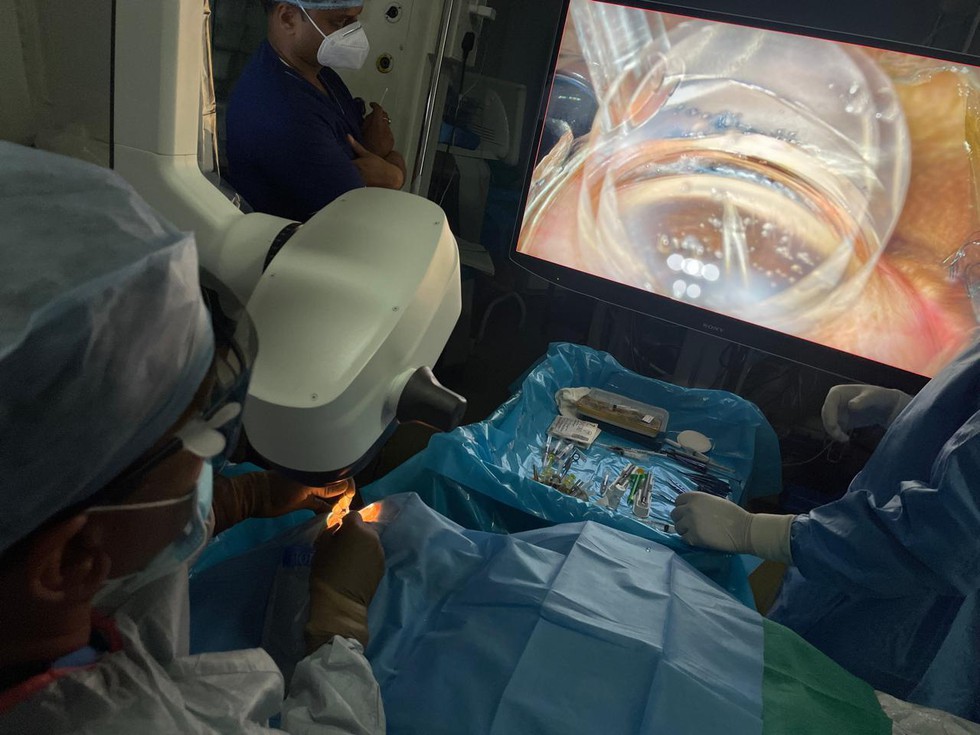
What is a Microscope?
- A microscope is an instrument that magnifies small objects, making them visible to the naked eye by bending (refracting) light rays through curved lenses.
- The most commonly used microscopes are optical microscopes, where visible light is focused through lenses to create an enlarged image.
What is a 3D Microscope?
- A 3D microscope produces images with depth information (X, Y, and Z axes), allowing researchers to visualize and measure the topography, volume, and internal structures of samples.
- Unlike traditional light microscopes, which provide flat, 2D images, 3D microscopes use advanced optical, electron, or computational techniques to capture and reconstruct three-dimensional data.
- This is particularly useful for studying complex biological or environmental samples, such as soil microbes, aquatic organisms, or
Features of the 3D Microscope
- The 3D Microscope uses advanced three-dimensional visualisation, assisting in complex eye surgeries such as treatment for squint, cataract, corneal diseases, glaucoma, and retinal conditions.
- It employs special 3D polarisation glasses for surgeons and a 55-inch 4K ultra-HD display.
- Key advantages include:
- Reduced surgical time and lower complication rates compared to conventional microscopes.
- Decreased endoilluminator power requirements, thereby reducing photo-toxicity risks.
- Ease of performing surgeries in complex and rare cases.
Prelims Pointers
April 27, 2025

Background
- The project successfully collected blood samples and associated phenotype data from over 20,000 individuals belonging to 83 population groups, comprising 30 tribal and 53 non-tribal populations spread across India.
- Preliminary findings based on the genetic data of 9,772 individuals were published in the journal Nature Genetics on April 8, 2025.
Types of Phenotype Data Collected
- The collected phenotype data included anthropometric measurements such as height, weight, hip circumference, waist circumference, and blood pressure.
- From the blood samples, complete blood counts and biochemical data such as glucose levels, lipid profiles, liver function, and kidney function tests were measured.
About 'Phenome India' Project
- Phenome India-CSIR Health Cohort Knowledgebase (PI-CheCK) is an initiative launched by the Council of Scientific and Industrial Research (CSIR) on December 7, 2023.
- The main objective of the project is to develop India-specific risk prediction models for cardio-metabolic diseases including diabetes, liver diseases, and cardiac diseases.
- It is India’s first-ever pan-India longitudinal health monitoring study focused specifically on cardio-metabolic health.
- Participants include around 10,000 individuals—primarily CSIR employees, pensioners, and their spouses—from across 17 states and 24 cities.
- Collected data includes clinical questionnaires, lifestyle and dietary habits, anthropometric measurements, imaging and scanning data, and extensive biochemical and molecular data.
- This study is crucial for understanding how ethnic diversity and lifestyle patterns unique to India influence the risk and incidence of cardio-metabolic disorders.
- Through this project, CSIR is promoting a Predictive, Personalised, Participatory, and Preventive (P4) healthcare model suited to Indian genetic and phenotypic profiles.
Prelims Pointers
April 27, 2025

About National Industrial Corridor Development Programme (NICDP)
- NICDP is India's most ambitious infrastructure initiative aimed at developing new industrial cities as "Smart Cities", integrating next-generation technologies across infrastructure sectors.
- National Industrial Corridor Development Corporation (NICDC) is the nodal agency managing the programme.
- NICDP is designed to attract investments from both large anchor industries and Micro, Small, and Medium Enterprises (MSMEs), acting as a catalyst for achieving the Government’s goal of $2 trillion in exports by 2030.
- Newly sanctioned industrial areas under NICDP include: Khurpia (Uttarakhand), Rajpura-Patiala (Punjab), Dighi (Maharashtra), Palakkad (Kerala), Agra and Prayagraj (Uttar Pradesh), Gaya (Bihar), Zaheerabad (Telangana), Orvakal and Kopparthy (Andhra Pradesh), and Jodhpur-Pali (Rajasthan).
- These projects are closely aligned with the PM GatiShakti National Master Plan, ensuring integrated, seamless multi-modal connectivity across the country.
Palakkad Industrial Smart City (Kerala)
- The Palakkad Industrial Smart City, spanning 1,710 acres across Pudussery Central, Pudussery West, and Kannambra, is set to reshape Kerala’s industrial landscape.
- Strategic location advantages:
- 21 km from Palakkad city
- 120 km from Cochin
- 50 km from Coimbatore
- Offering seamless interstate connectivity and strong logistical benefits.
- Designed to be South India's key industrial gateway, it ensures multimodal connectivity via road, rail, and air, making it attractive for high-quality investments, regional employment generation, and innovation.

